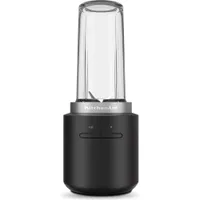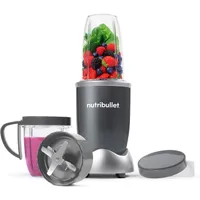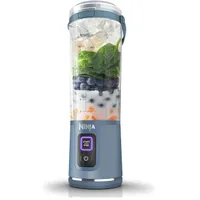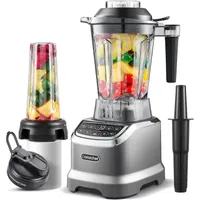The 7 best blenders: top models from Vitamix, Smeg, and Nutribullet tested by home tech experts
Blenders for the silkiest soups, sauces, and smoothies
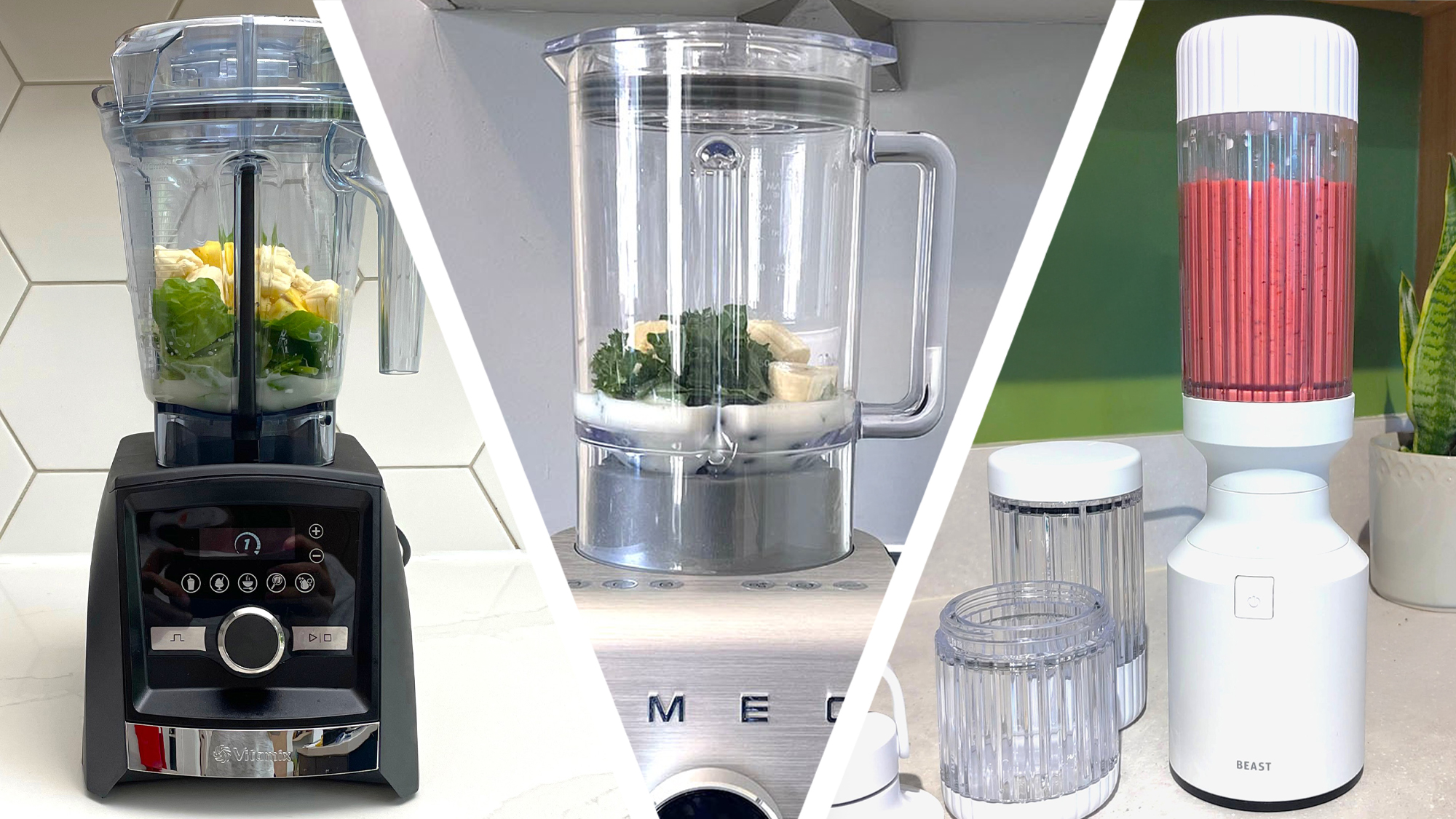
The best blenders make it easy to create a whole range of healthy foods and tasty treats. You can use yours to whizz up great smoothies, blend soup, juice fruit, and even make things like hummus, mayonnaise and salsa. If you're used to buying shop-bought smoothies or soups, making your own and blending it at home can save you a ton of money in the long-run, too.
There's plenty of choice about, but this guide is here to simplify things and help you find the best blender for you. We've tested a wide range, including portable blenders for single-serve smoothies and jug blenders that are designed to sit on your kitchen counter, and you can get the low-down on our top picks below. In our tests, we assess not only how well each model blends different types of food, but also things like how noisy it is and how easy it is to clean.
Not sure if it's a blender you need? There is some overlap with today's best food processors – broadly speaking, if the result you're aiming for is a liquid (smoothie, soup), a blender is the best tool for the job. A food processor will be better for chopped things like pesto or salsa. All clear? Read on for our pick of the best blenders for a range of budgets and food types...
The latest addition to this guide is the Nutribullet Triple Prep System, which gives you a jug blender, smoothie-maker, and food processor in one – and performs well across the board.
Meet the expert

Cat is TechRadar's home tech editor, specializing in smart homes and kitchens. She's been a tech journalist for over 10 years, is a keen home cook, and reviews new kitchen appliances every month, so she's ideally placed to help you choose a blender that's just right for you.
The best blenders
Why you can trust TechRadar
The best blender overall
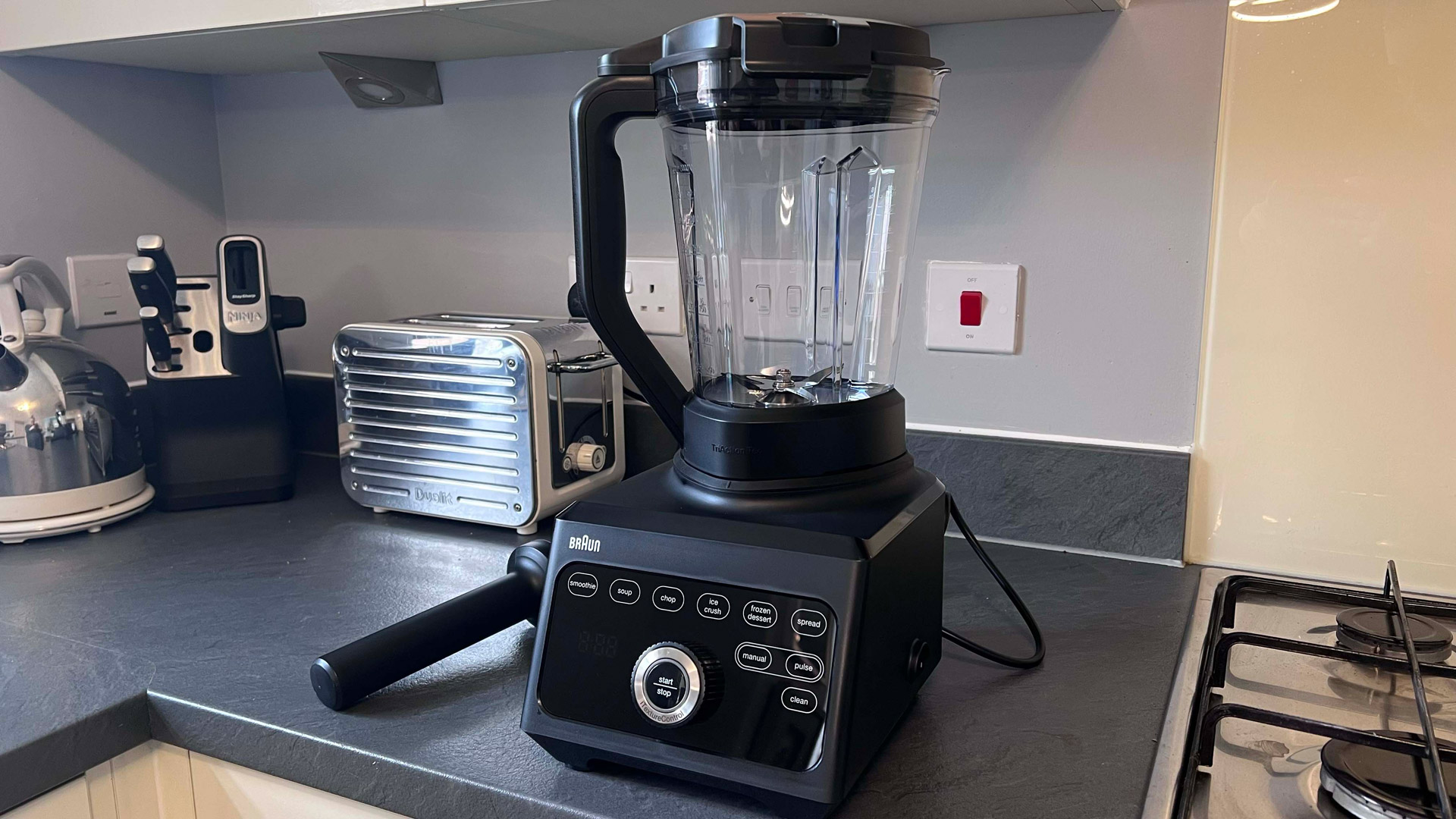
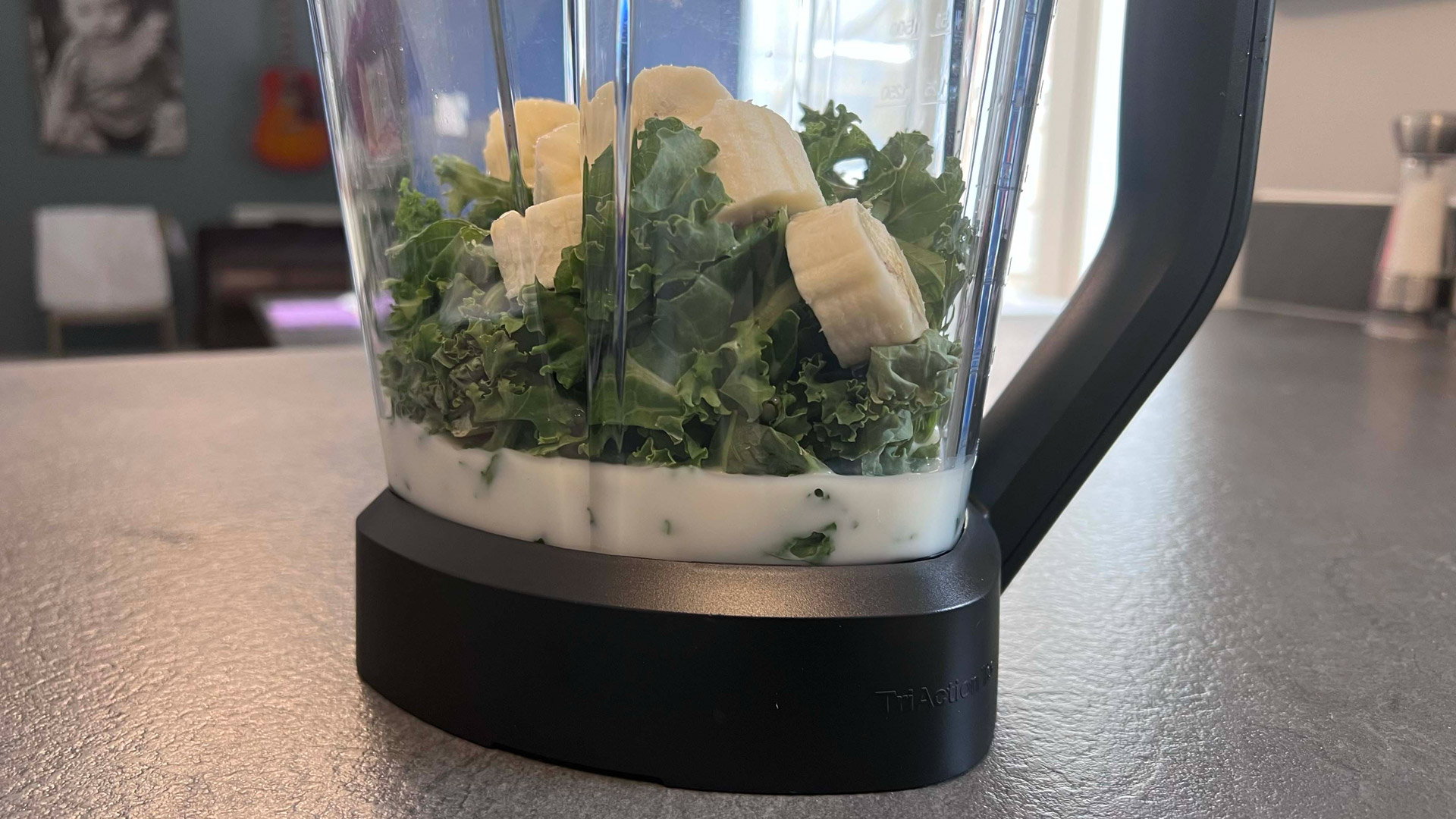
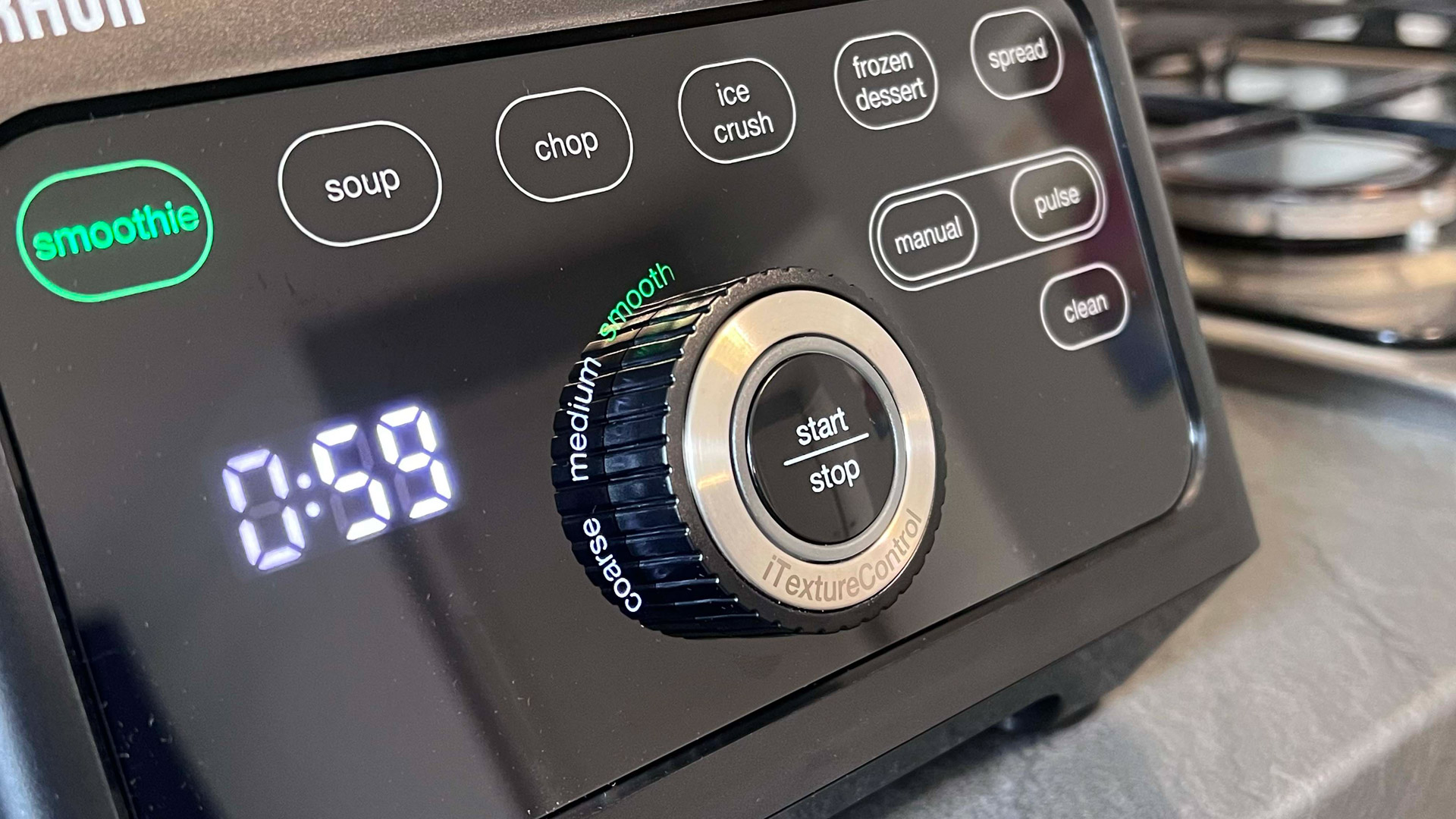
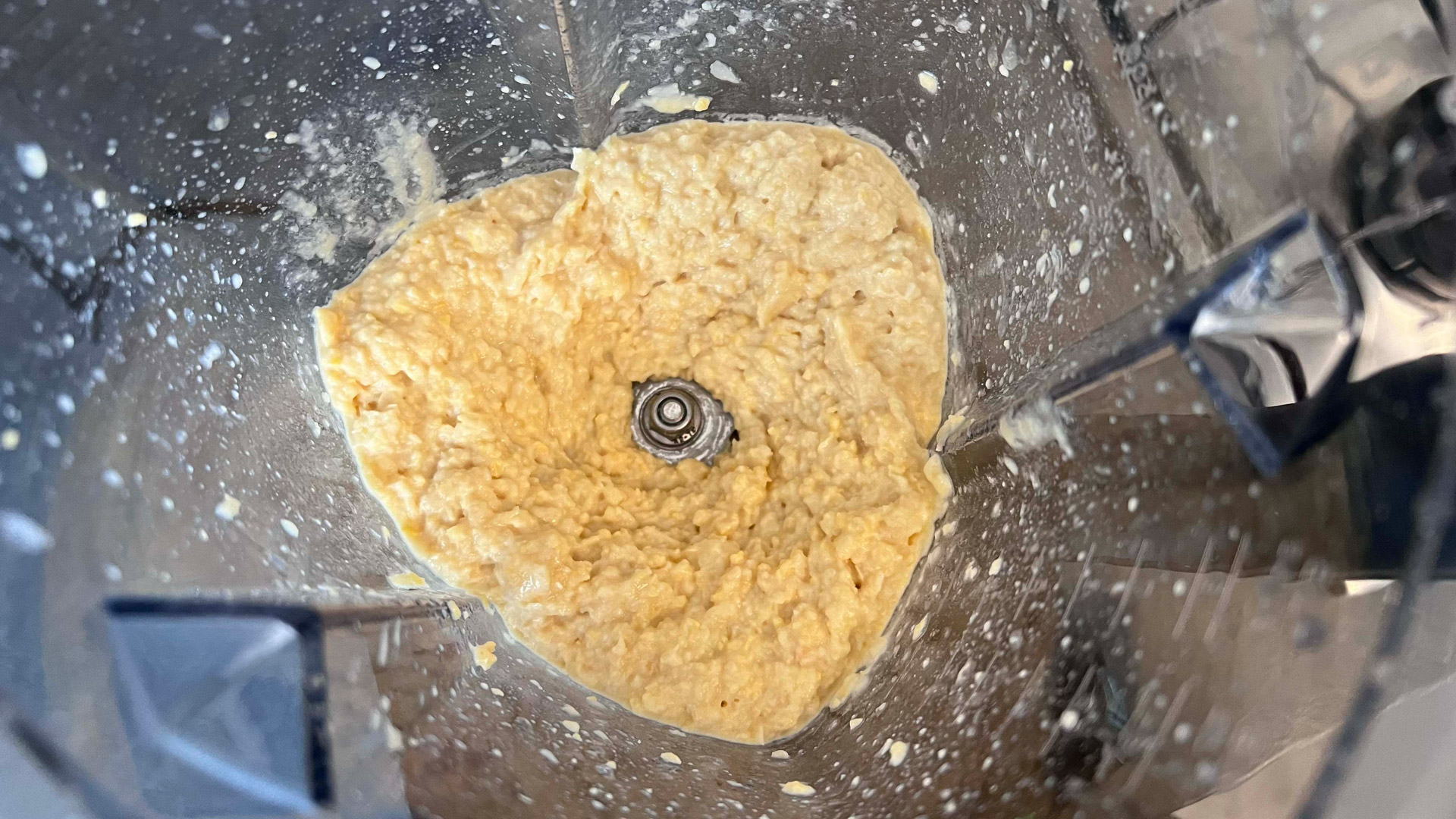
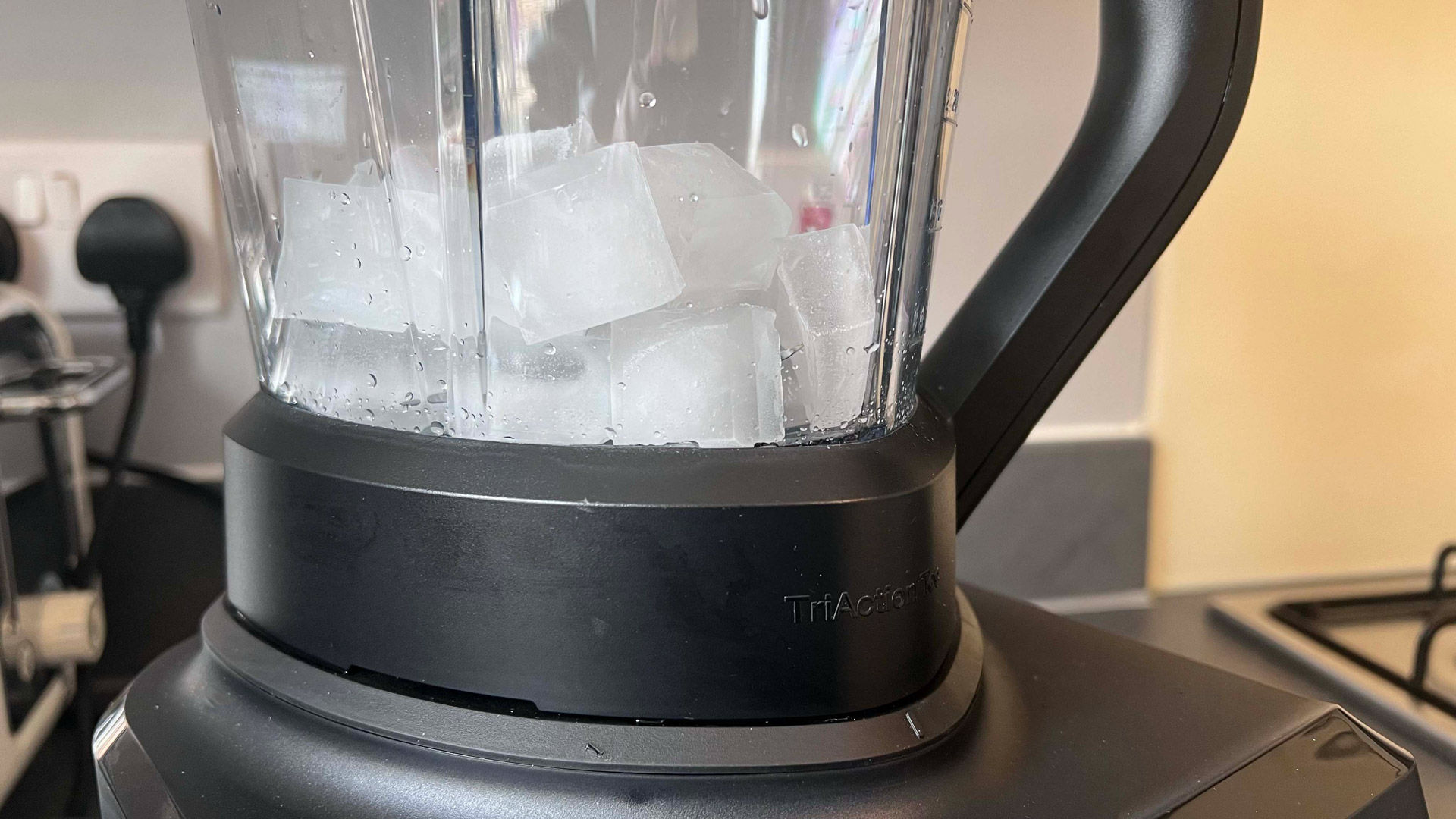
Specifications
Reasons to buy
Reasons to avoid
✅ You want a fast, powerful blender: The triangular jug and powerful motor make light work of ingredients and prevent them sticking to the sides.
✅ You want easy cleaning: This blender features a built-in cleaning mode and dishwasher-safe parts.
❌ You prefer quiet appliances: This blender can be as loud as a motorcycle engine on its highest settings.
❌ You're on a tight budget: The Triforce is often available at a discount, but even then it's not a cheap blender.
If you're looking for an ultra-capable, versatile, all-rounder, the Braun TriForce (or PowerBlend 9 in the UK and Australia) is the best blender for you. After testing, it quickly became our regular reviewer's go-to blender. It excels at the basics, offering quick and efficient blending of a wide range of ingredients, partly thanks to an unusual triangular jug shape that funnels the mixture down towards the blades, leaving little if an stuck to the sides.
It's also extremely customizable, with six presets (and three texture settings for each), plus 10 manual speed options. On test, we found all of the presets delivered the consistency we wanted, creating smooth smoothies, consistently textured hummus, and effectively crushed ice. The presets stray away from the standard offerings to more unusual, but very welcome, additions like a Hot Soup mode and Chop function.
While it can be a little noisy on higher settings, it's worth it for the speed and power on offer. The 2L just is generous, so if you want something a little more compact, check out our #2 pick instead.
Read our full Braun TriForce / PowerBlend 9 blender review
The best medium capacity blender
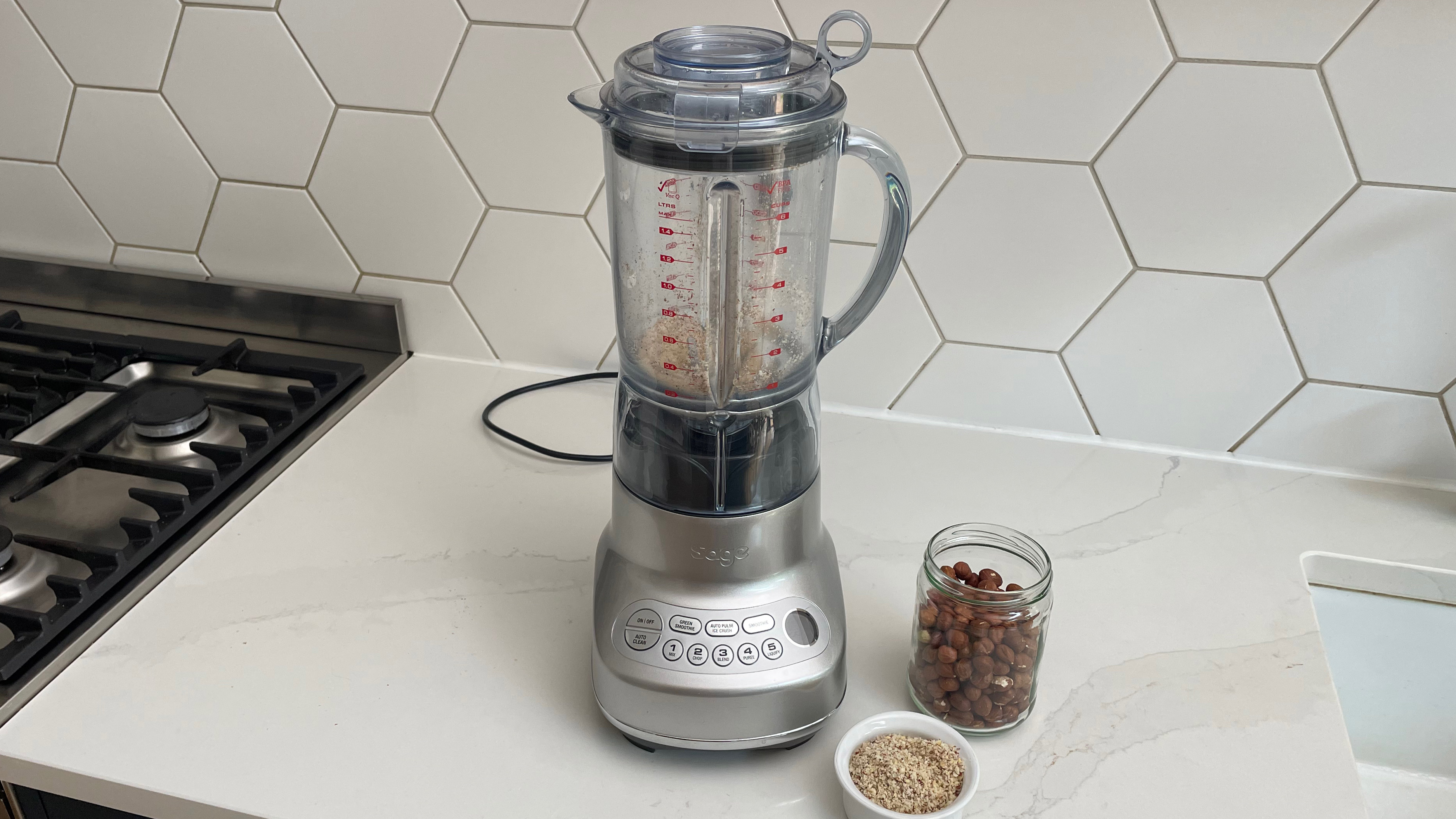
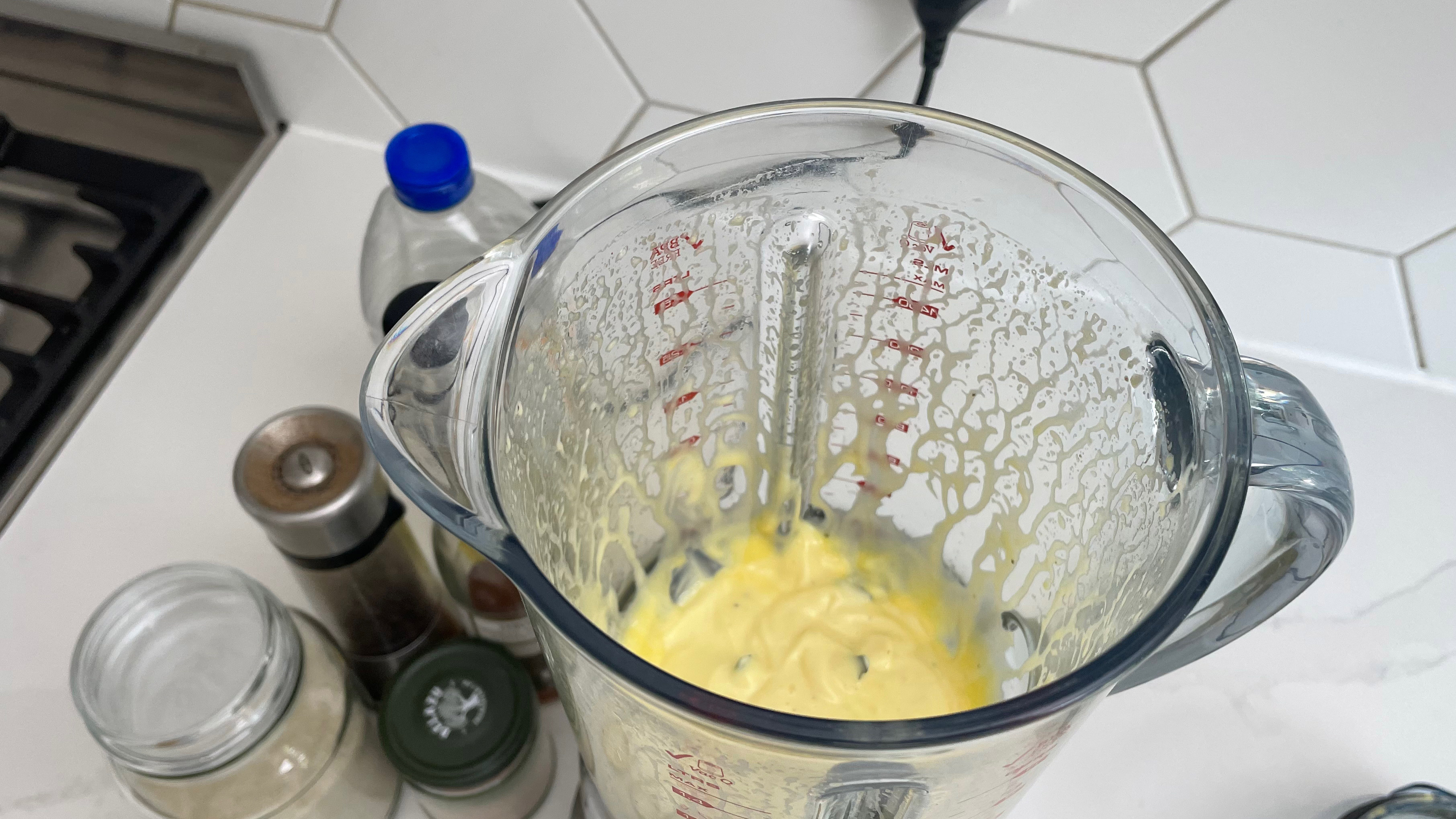
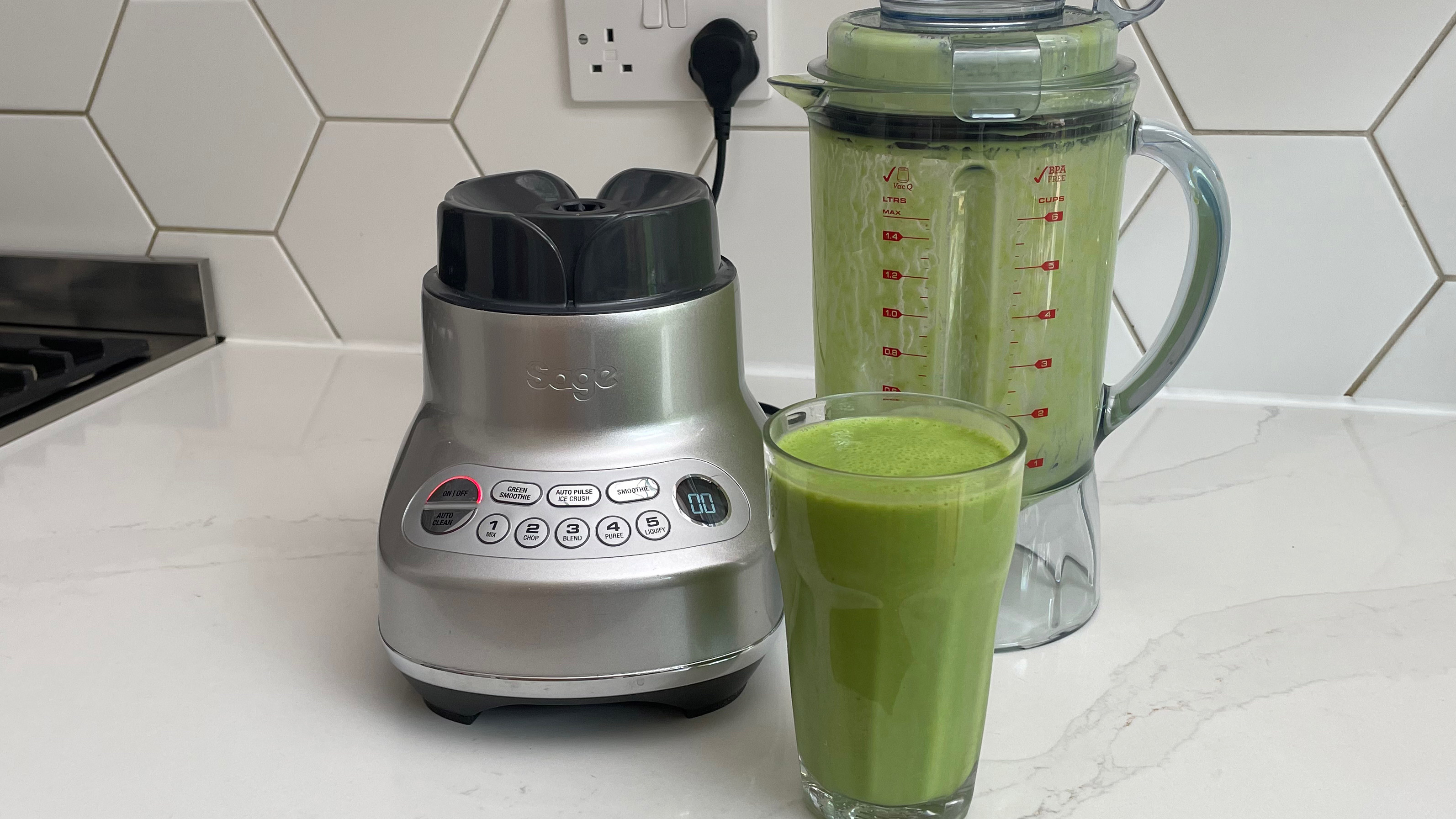
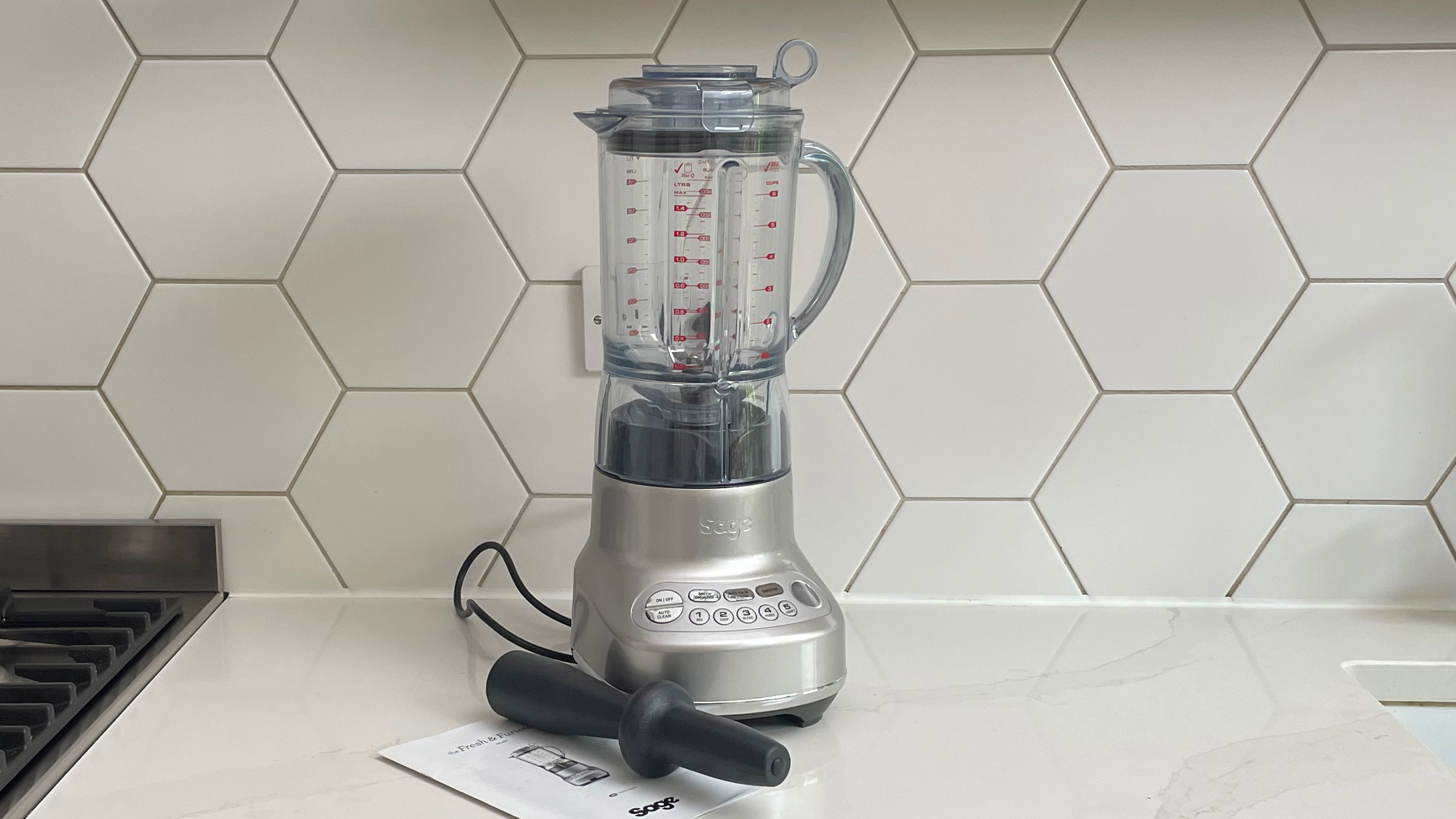
Specifications
Reasons to buy
Reasons to avoid
✅ You want a compact blender: This appliance has a relatively small footprint, and doesn't come with heaps of accessories.
✅ You need real power: This blender handled everything we threw at it with ease, including tough pineapple and ice.
❌ You need a large jug: The 50oz / 1.5 liter pitcher isn't tiny, but if you're making soup for a family then you might want something roomier.
❌ You want to make single-portion smoothies: There are no on-the-go blending cups included to transporting your drinks, so you'll need to decant them into something else.
If our #1 pick is a little big, check out the Breville Fresh and the Furious (known as Sage the Fresh and Furious in the UK). This blender combines the brand's sleek styling with power to create a compact blender that's effective and easy to use. It's also more affordable than other models the brand offers, although the base is made from plastic rather than metal. The 1.6-quart /1.5-liter jug is smaller than most other Breville blenders, and smaller than the 2-liter capacity of the Braun TriForce #1.
On test, this blender performed well across the board. It was able to liquidize pineapple and leafy spinach into a completely smooth and lightly aerated drink, with no bits, as well as crush ice, chop nuts, and emulsify eggs and oil into mayonnaise, with no issues.
We found a slight amount of leakage when the blender was filled to maximum capacity, but this was only in the well of the lid and not enough to be a serious concern. If you need a general-purpose jug blender for a wide range of kitchen needs, the Fresh and Furious is an excellent choice.
Read our full Breville the Fresh and Furious review
The best small blender
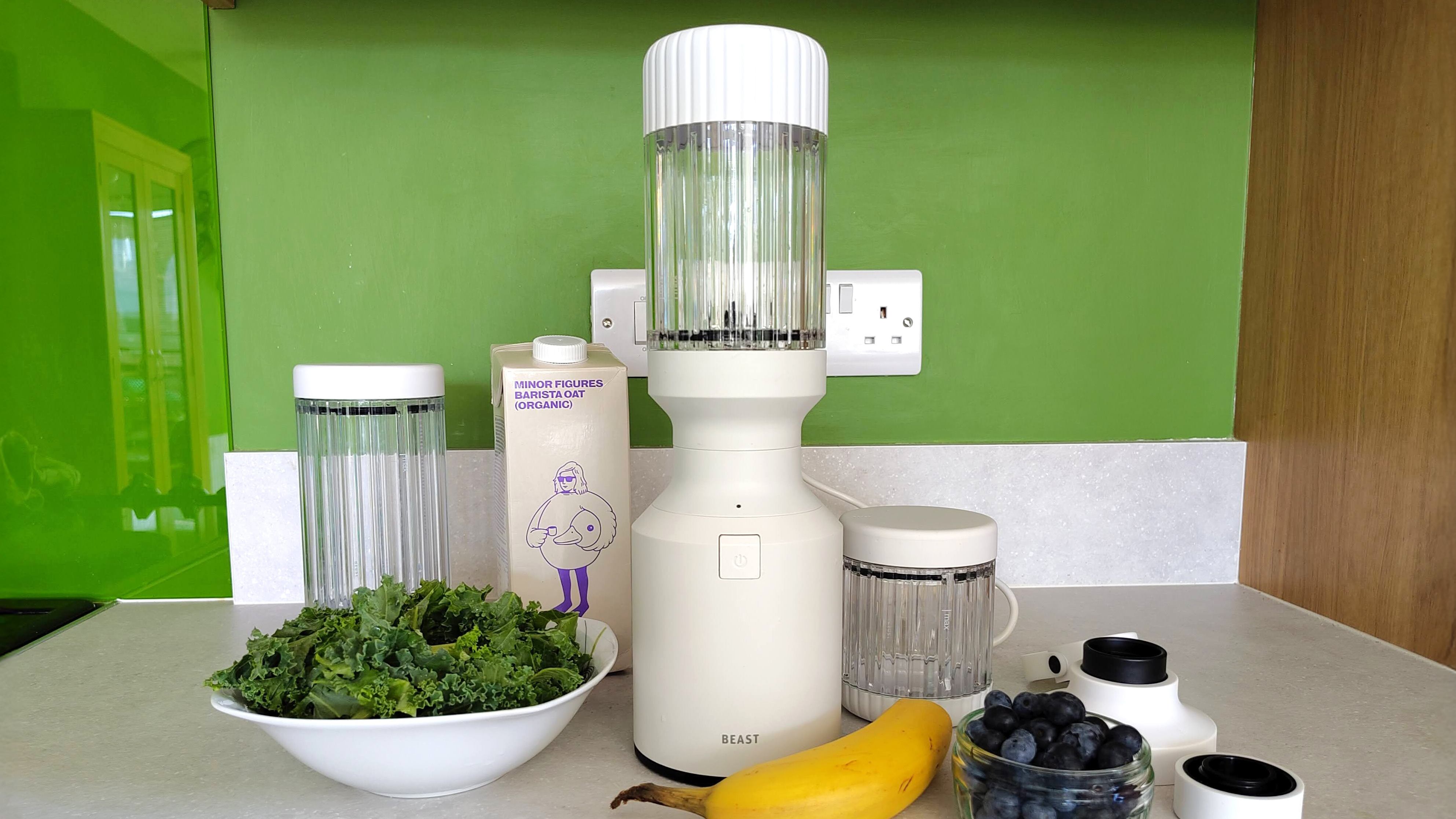
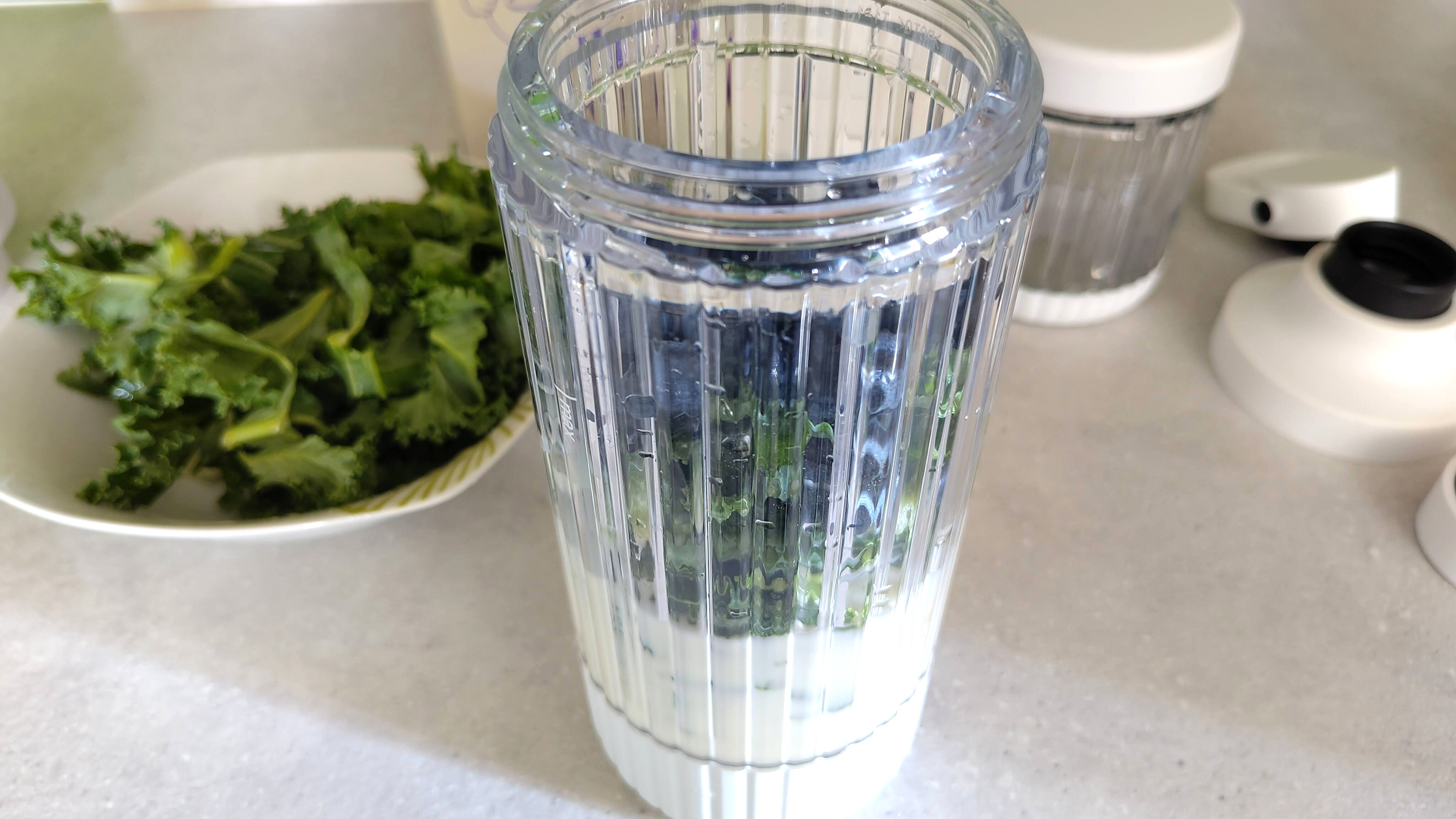
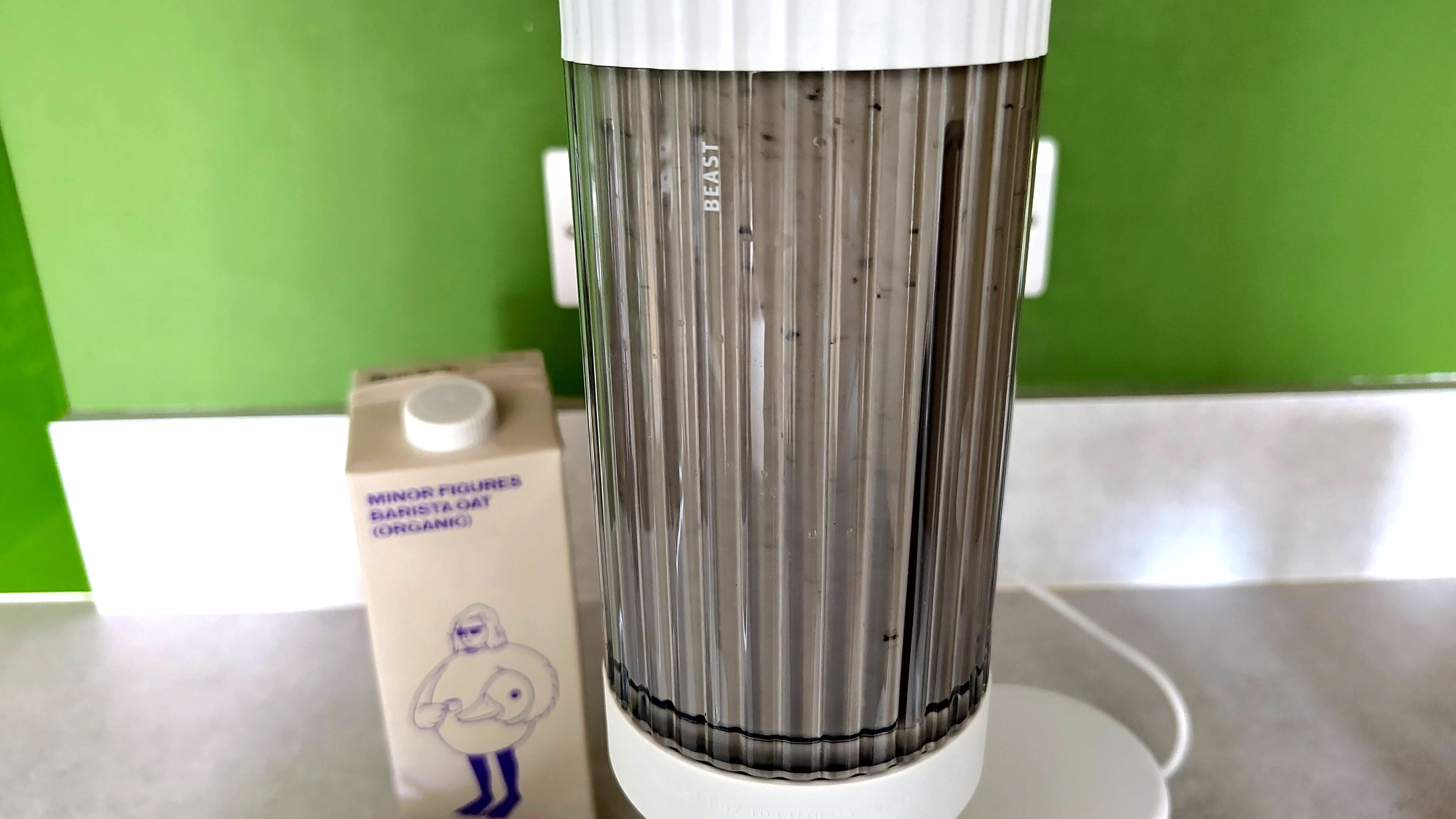
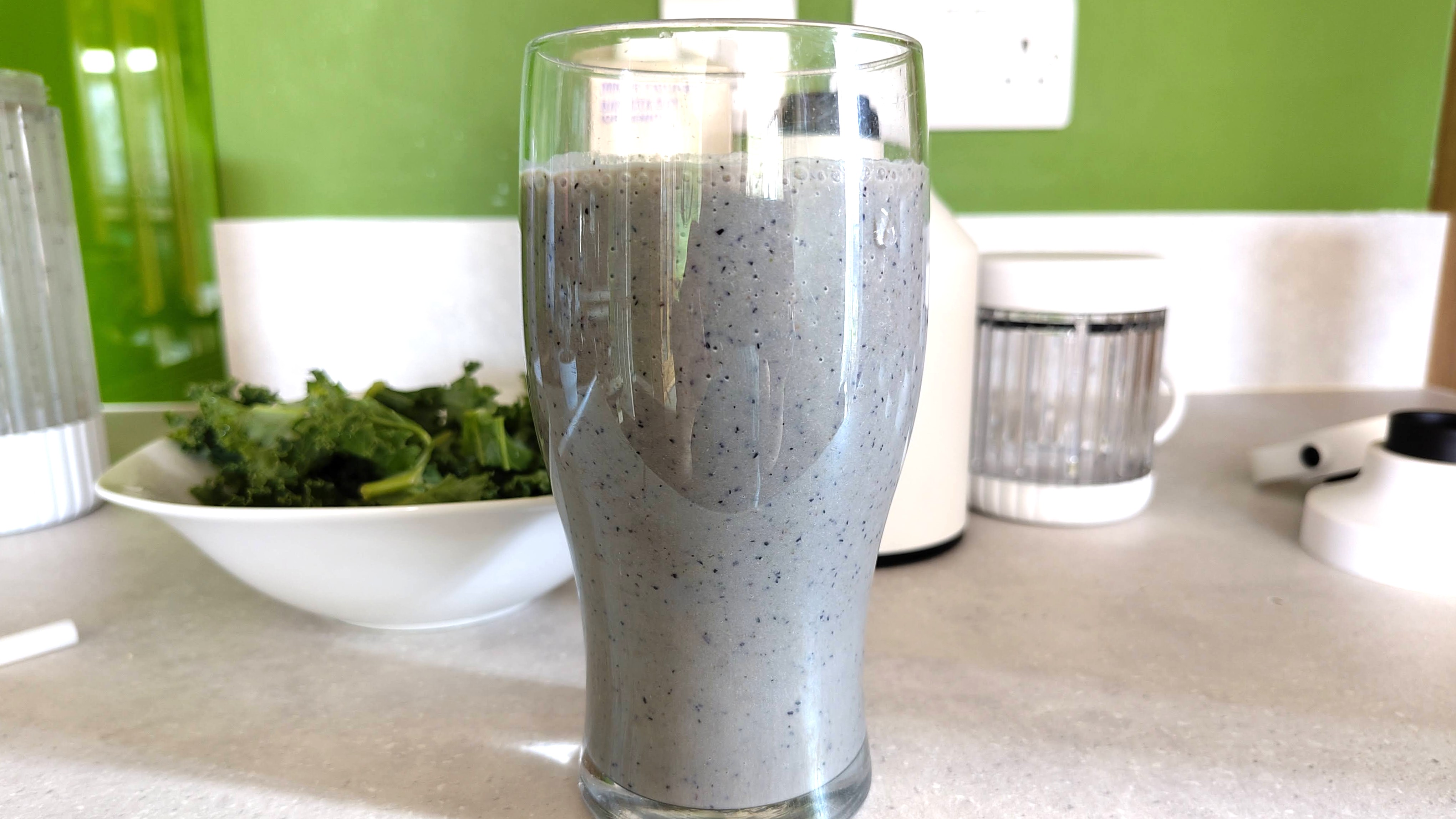
Specifications
Reasons to buy
Reasons to avoid
✅ You want serious power: he Beast Mighty 850 Plus has a lot more blending power than the average smoothie maker. Frozen fruit and tough veggies are no match for its motor and blades.
✅ You value versatility: This blender's different-sized vessels make it great for more than just drinks. The smallest one is particularly good for whipping up salad dressing and cold sauces.
❌ You want to blend on the move: The 850 Plus doesn't run from a battery, so you'll be restricted to blending in the kitchen.
❌ You're watching the pennies: This is a premium personal blender. You're getting a lot for your money, but if you're on a tight budget, then there are cheaper, though less powerful, alternatives available.
Beast's blenders are designed with the health-conscious crowd in mind, and with three blending vessels included, the 850 Plus is ideal for whipping up shakes, smoothies, and salad dressings. It's not the most powerful model in Beast's range (that would be the Mega 1200 Plus), but in my tests it proved more than a match for tough ingredients like chunky frozen strawberries and handfuls of fibrous veg.
Unlike some similarly sized blenders, the 850 Plus doesn't run from a battery., and therefore can't be used on the move. You do, however, get a choice of lids for carrying your creations, including one made for drinking from, and one that you can poke a straw through for mess-free sipping. You get two reusable straws bundled with the blender, along with two cleaning brushes.
All three blending vessels have ridged sides, which according to Beast Health work to produce 'internal turbulence'. I certainly can't argue with the results, though ingredients (particularly sticky ones like peanut butter) have a tendency to get stuck on them. Thankfully though, all the blending vessels and lids are dishwasher-safe, so it's never much of a problem. Just put them on the top rack and they come out spotless.
Read our full Beast Mighty 850 Plus review
The best stick blender
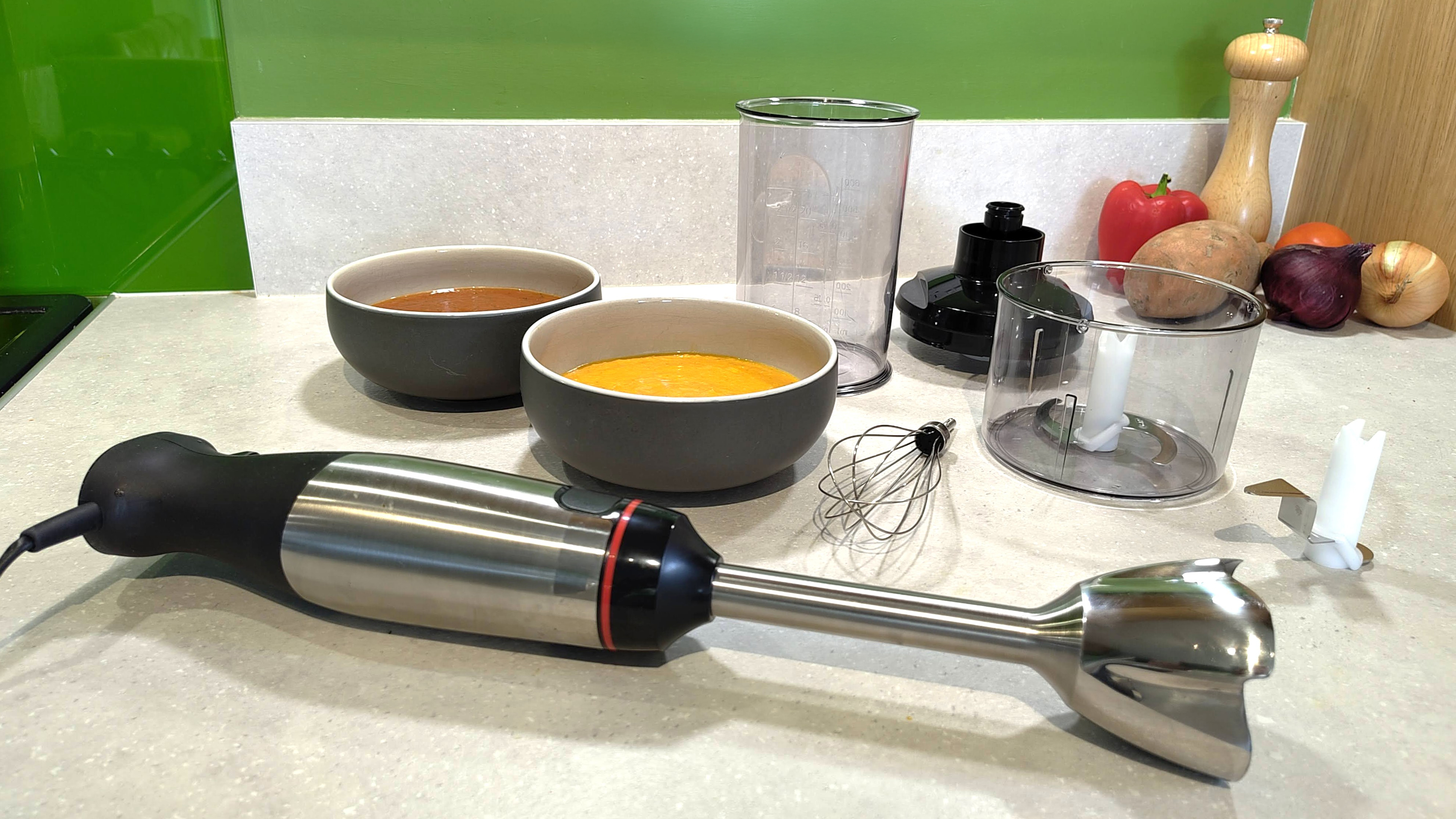
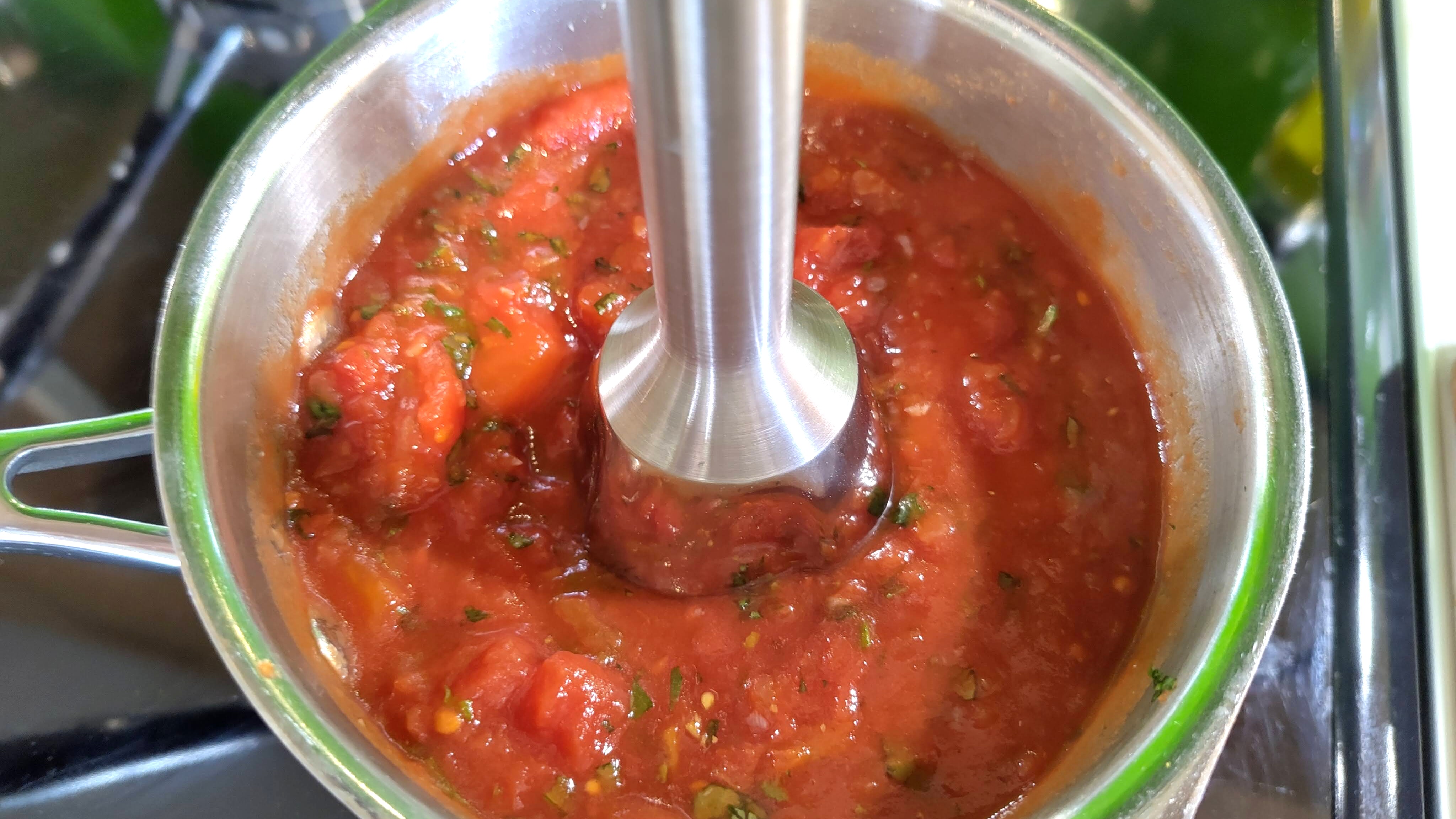
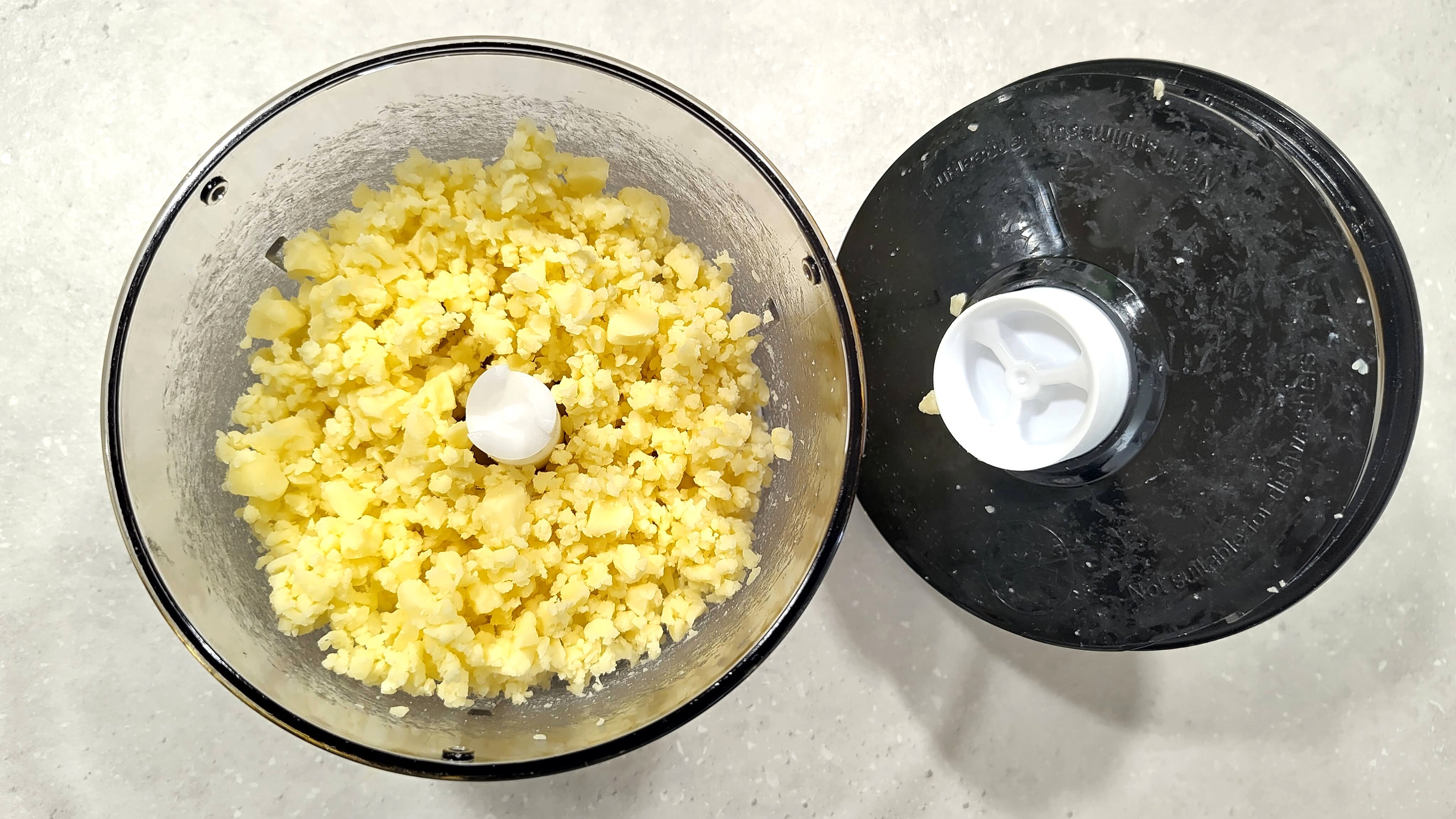
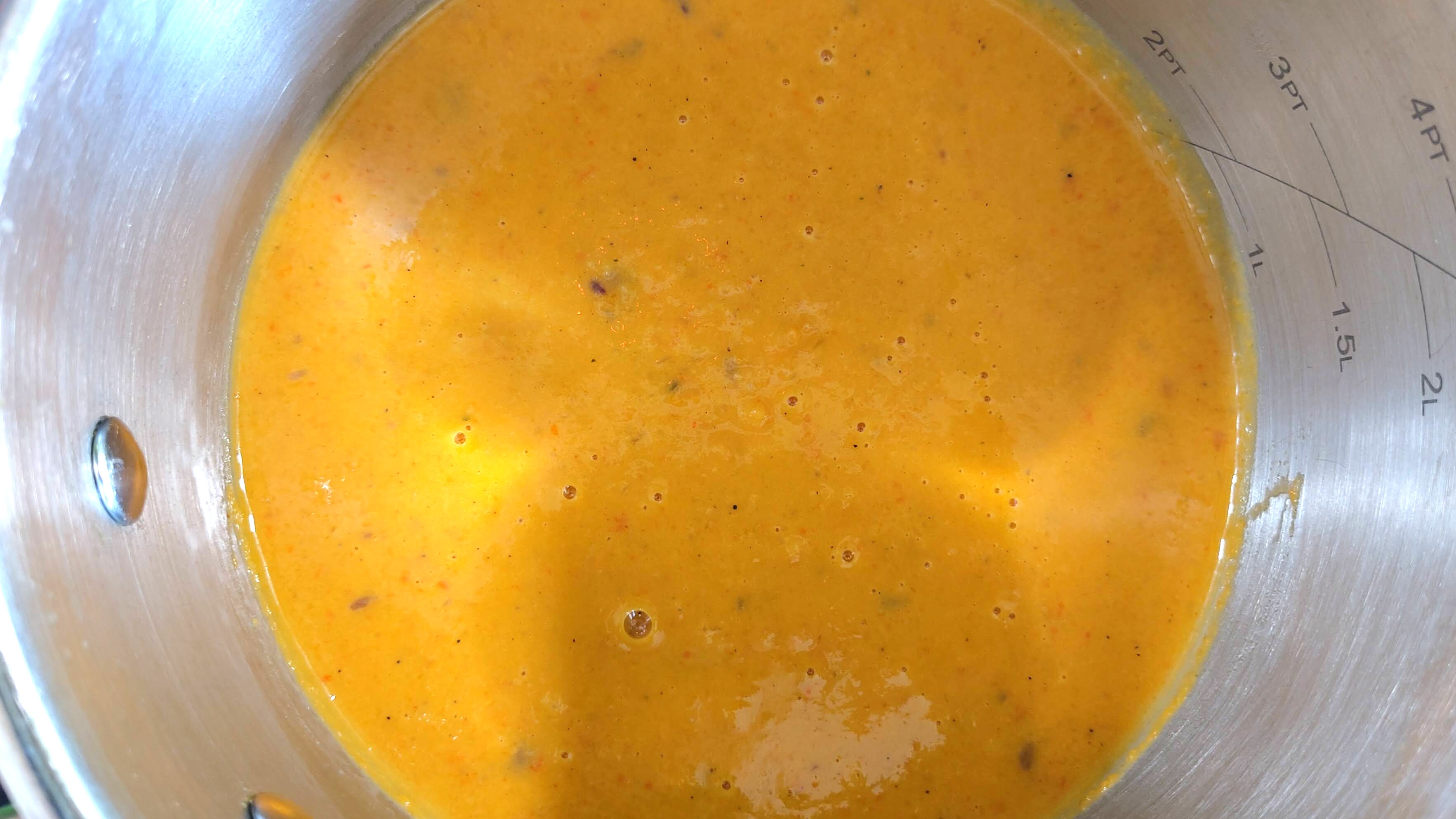
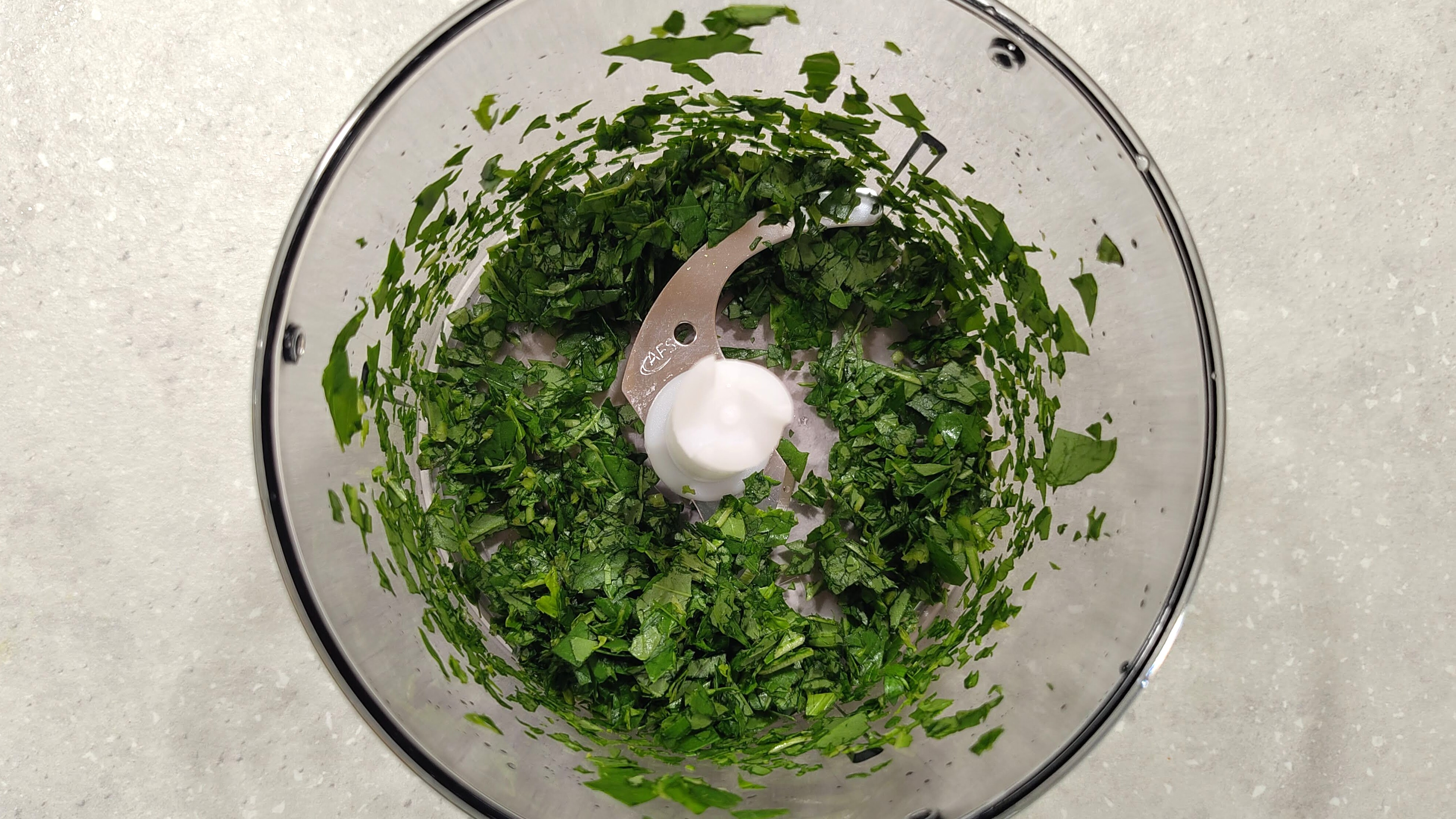
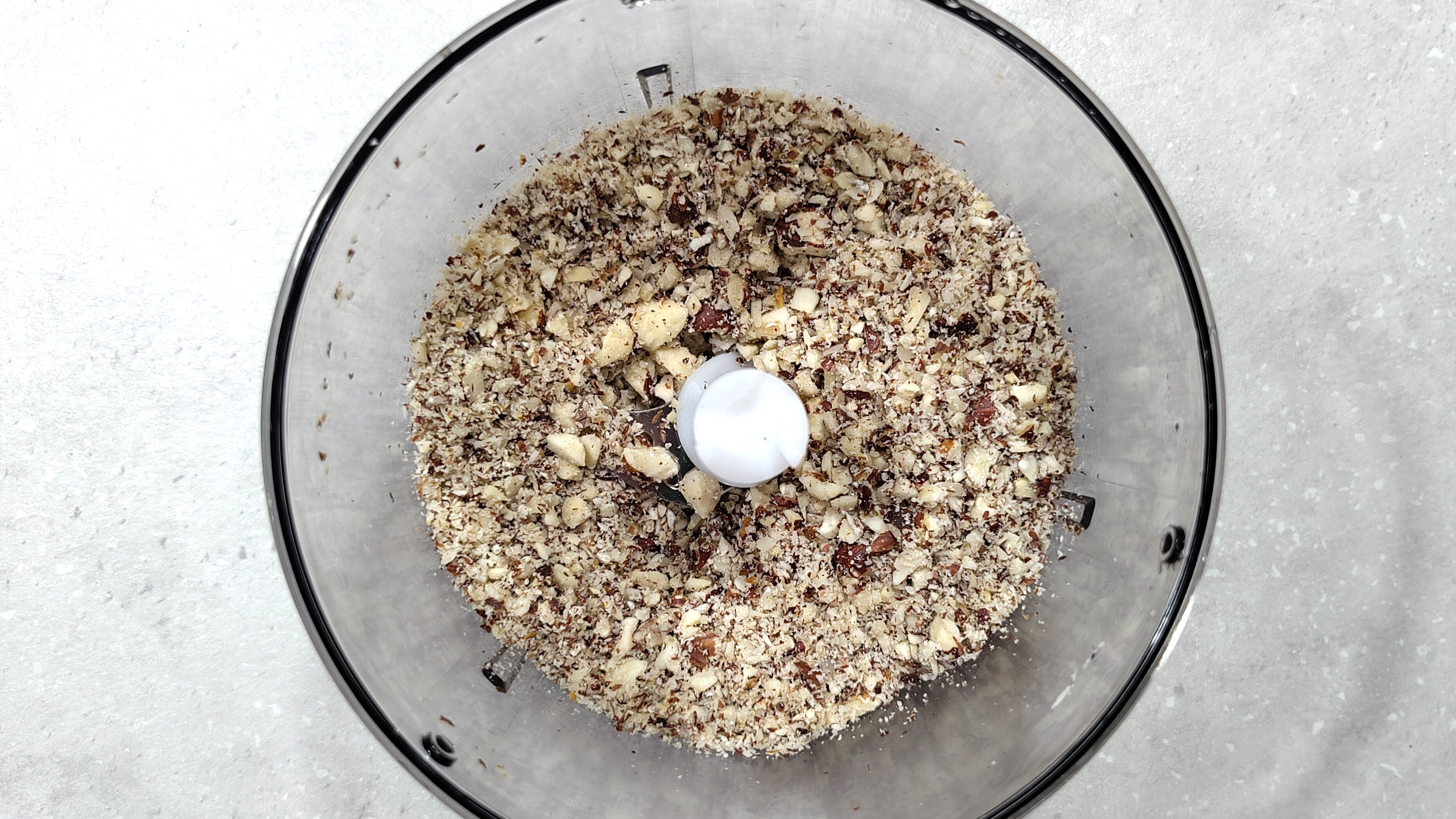
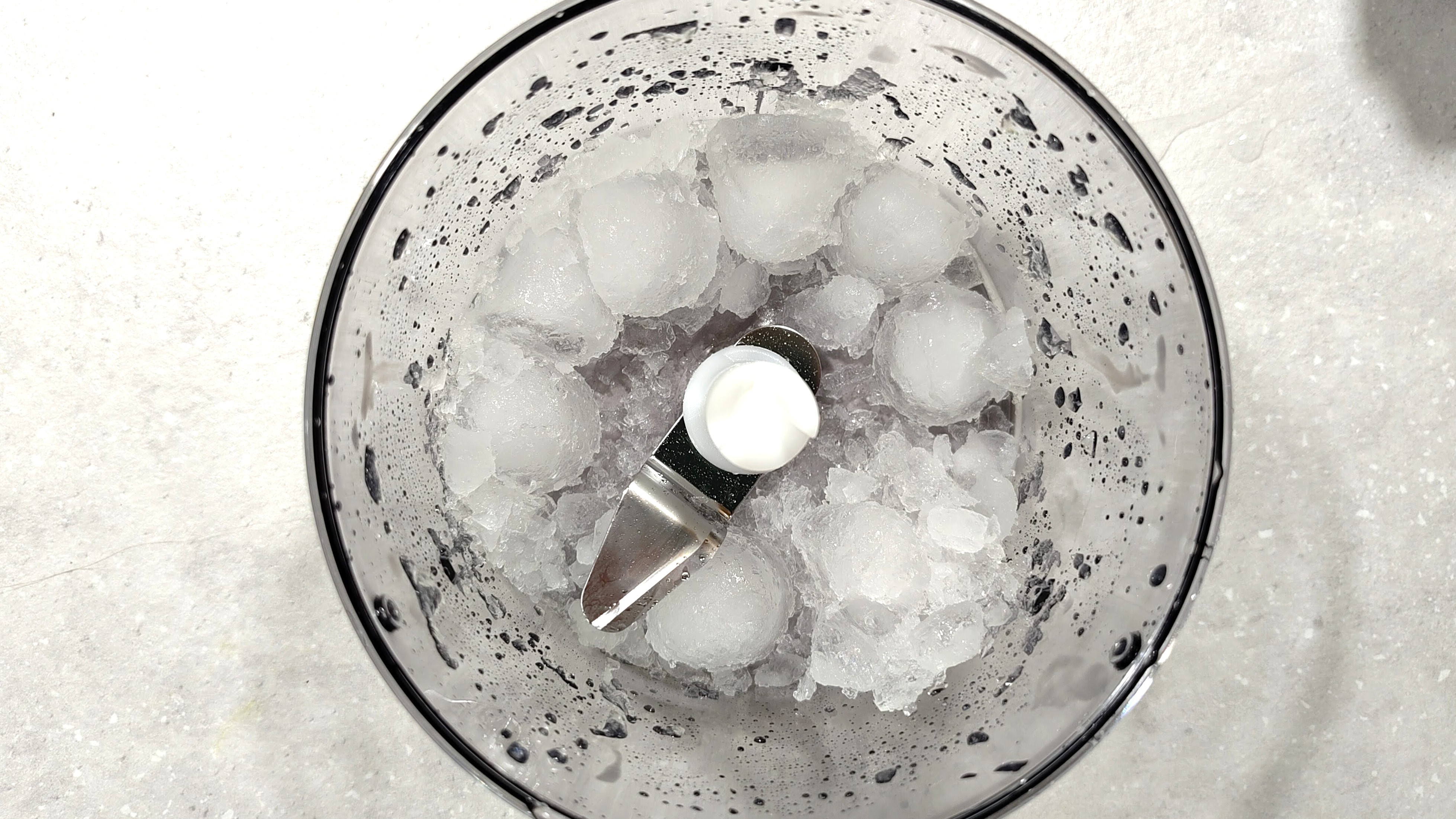
Specifications
Reasons to buy
Reasons to avoid
✅ You have limited hand strength or mobility: This is a thoughtfully designed stick blender that's comfortable to hold, and doesn't require any awkward twisting motions to swap accessories.
✅ You want fewer appliances in your kitchen: This multifunction device can replace a blender and electric whisk, and may make your food processor redundant, too.
❌ You want to make slushies: Ice is the ErgoMaster's one weakness. If you're a fan of slushies, opt for a personal smoothie-maker instead.
❌ You're on a tight budget: There are good-quality stick blenders available for less, including the ErgoMaster Series 4 , which is essentially the same but has a plastic chassis.
Stick blenders (also called hand blenders or immersion blenders) are very convenient for making soups and sauces because they don't require you to pour hot ingredients between pans and pitchers. However, they can be uncomfortable to use, particularly if you have to hold down a hard button to keep the blade running.
That's not the case with the Bosch ErgoMaster Series 6, which has a curved body that's comfortable to hold, and a large trigger-style control that you can pull with your whole hand. It's a clever design that's particularly well suited to anyone with limited strength or mobility in their hands.
During my tests the standard blender foot worked extremely well, turning cooked ingredients into smooth vegetable soup in a couple of minutes. The only drawback was that the body of the blender had a tendency to get rather warm, though the soft-touch grip never became hot.
In addition to the blending foot, the ErgoMaster Series 6 also comes with a mini chopper attachment with two blades (one for small ingredients and another for ice), plus a balloon whisk. I found the chopper's 'universal blade' great for herbs, nuts, onions, and cheese (though cheese must be cut into small cubes first) and the balloon whisk was even better than my regular hand mixer for whipping egg whites into stiff peaks.
The only accessory that didn't blow me away was the ice blade. According to the manual, this should have chopped a handful of ice cubes in just a few seconds, but even after a full minute, my ice was a very uneven slush.
If you're not planning to dice much ice, though, this is an excellent stick blender that's super easy and comfortable to use.
Read our full Bosch ErgoMaster Series 6 review
The best blender for ice
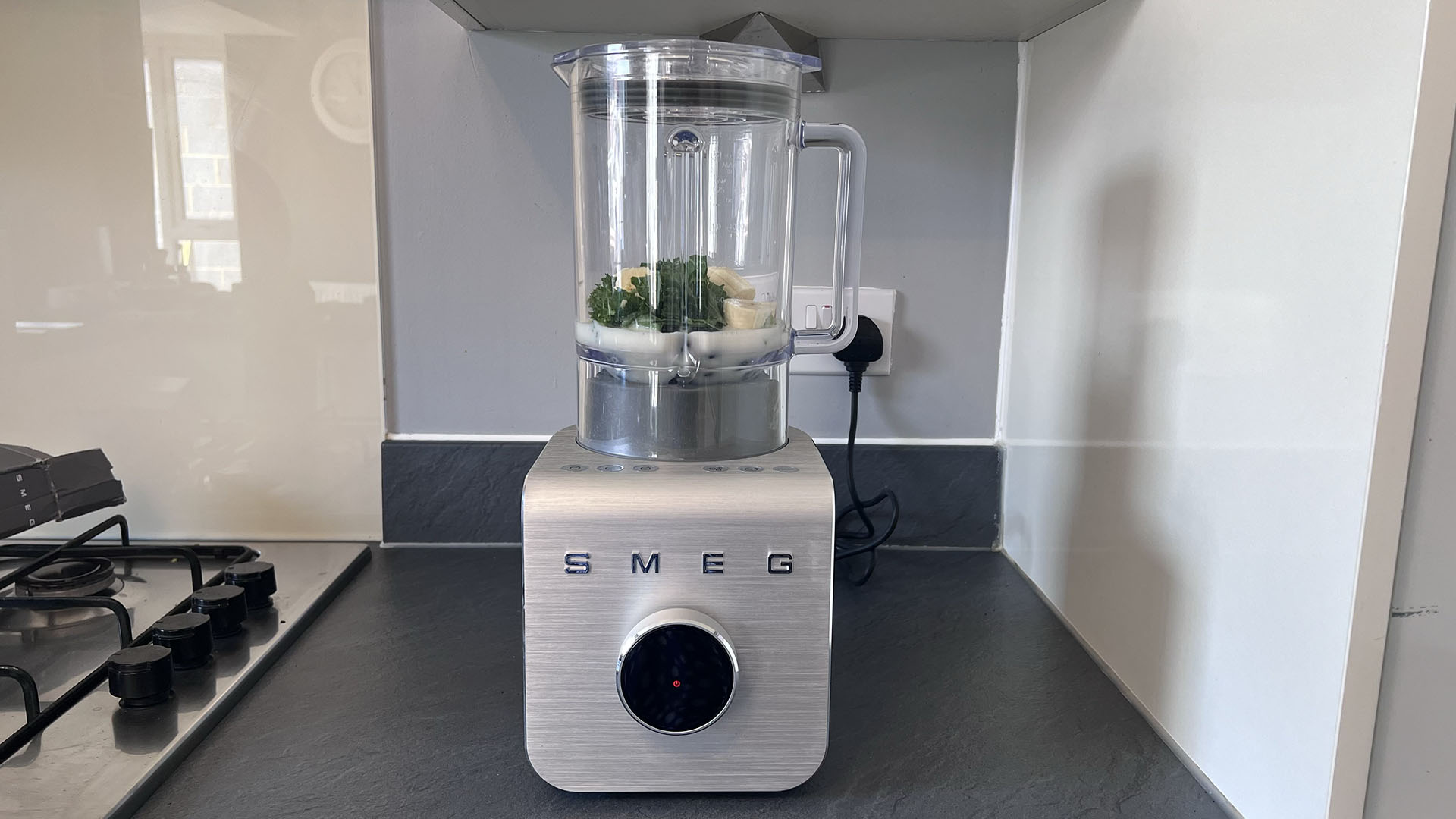
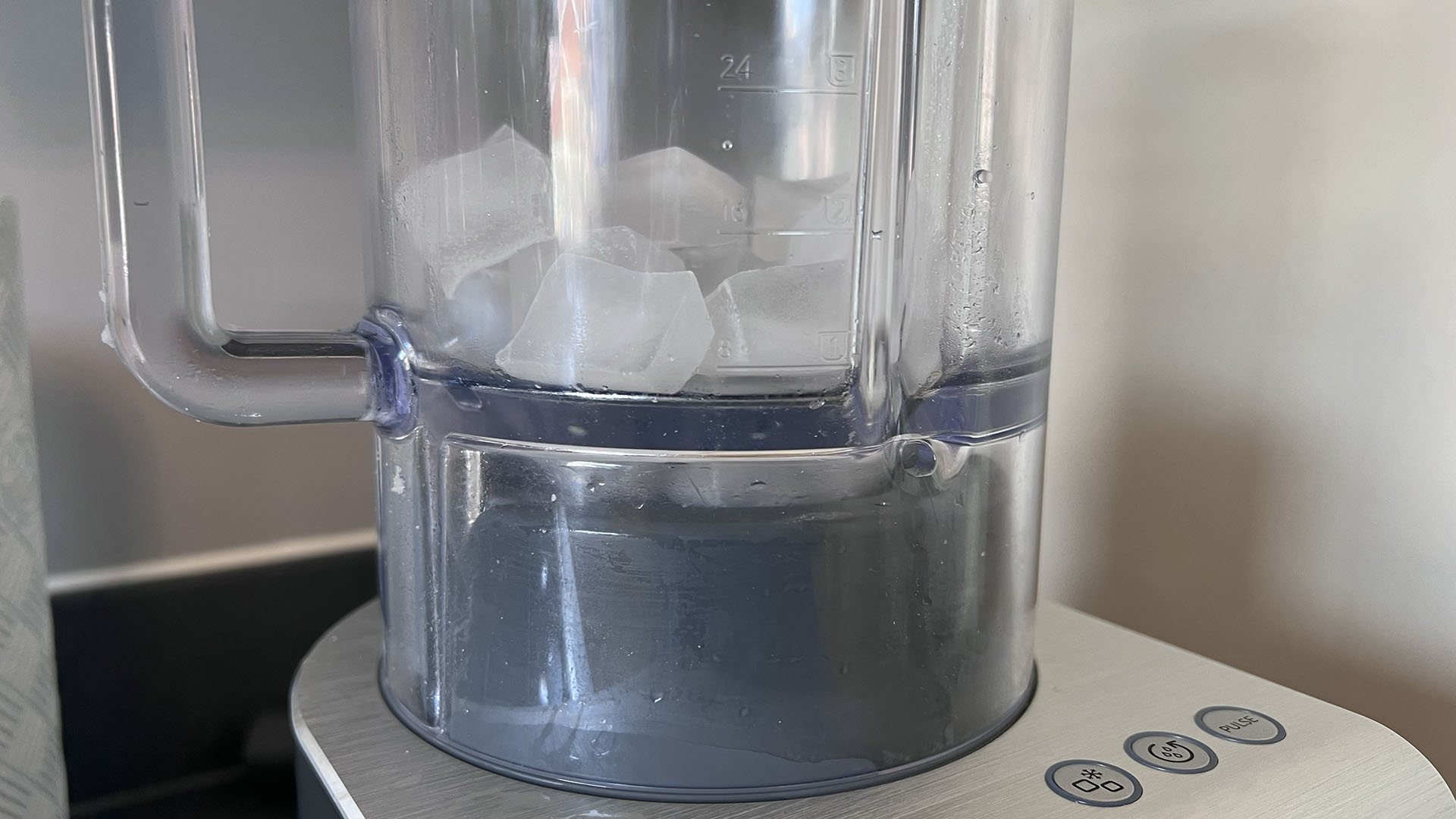
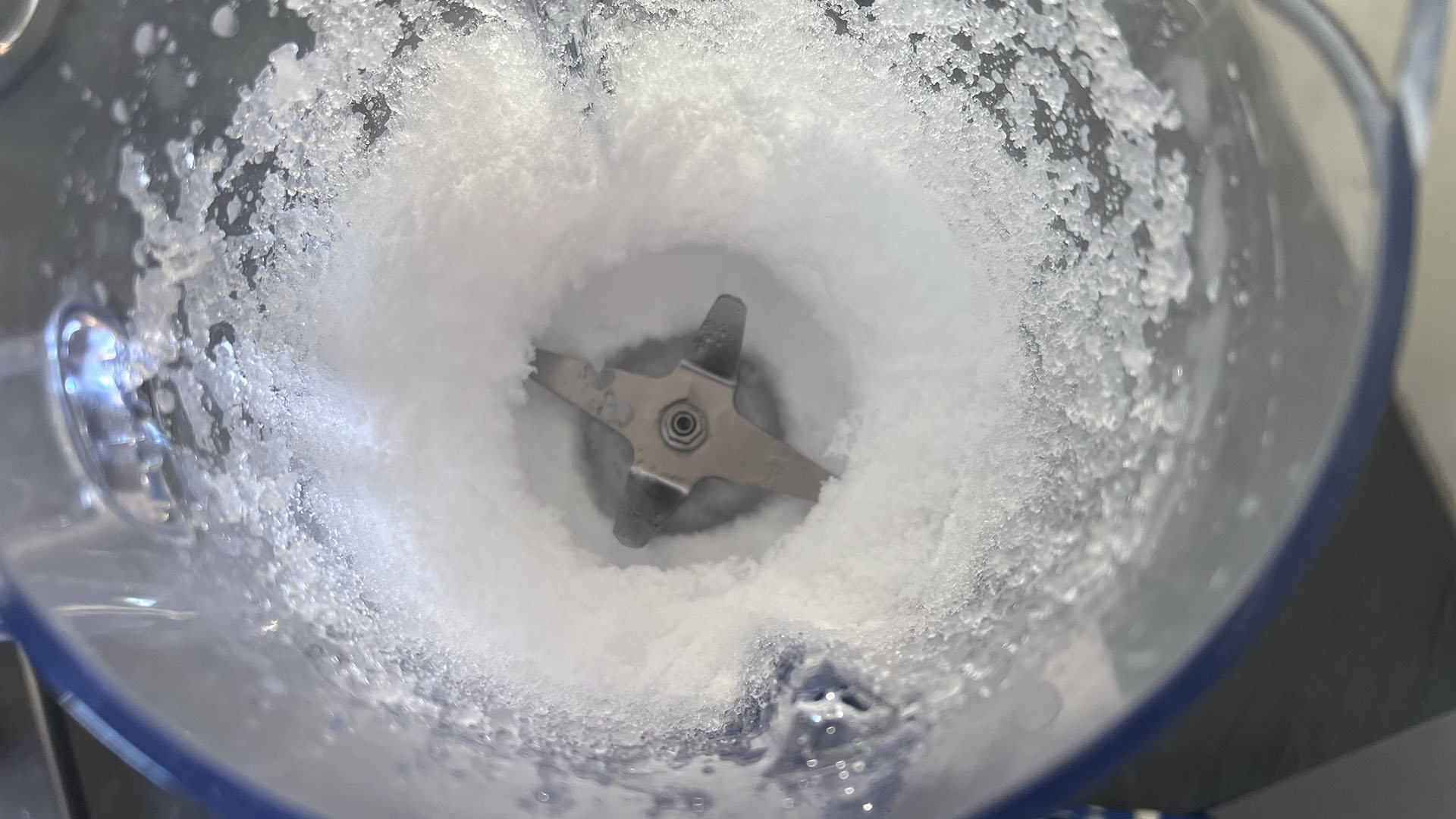
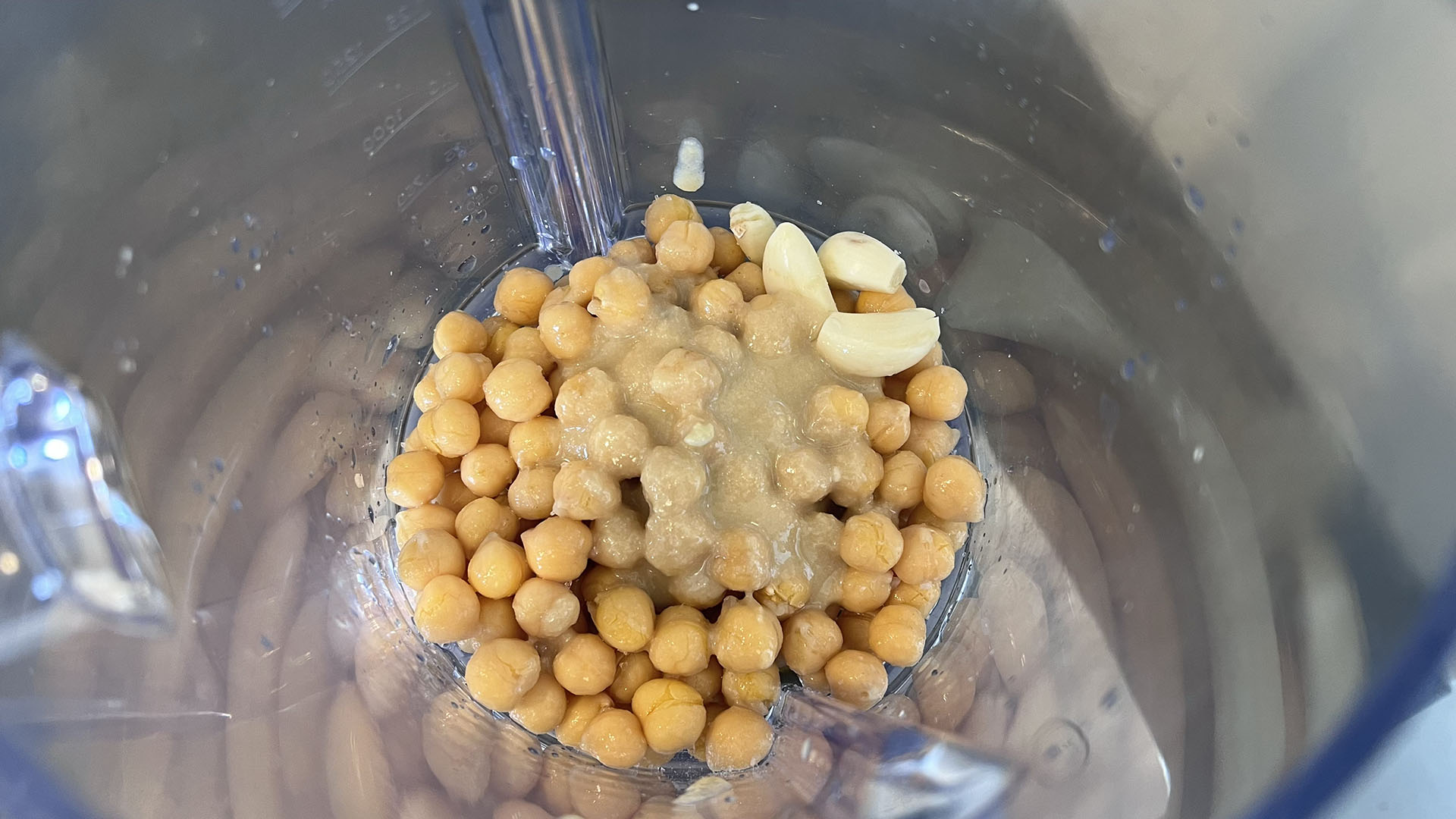
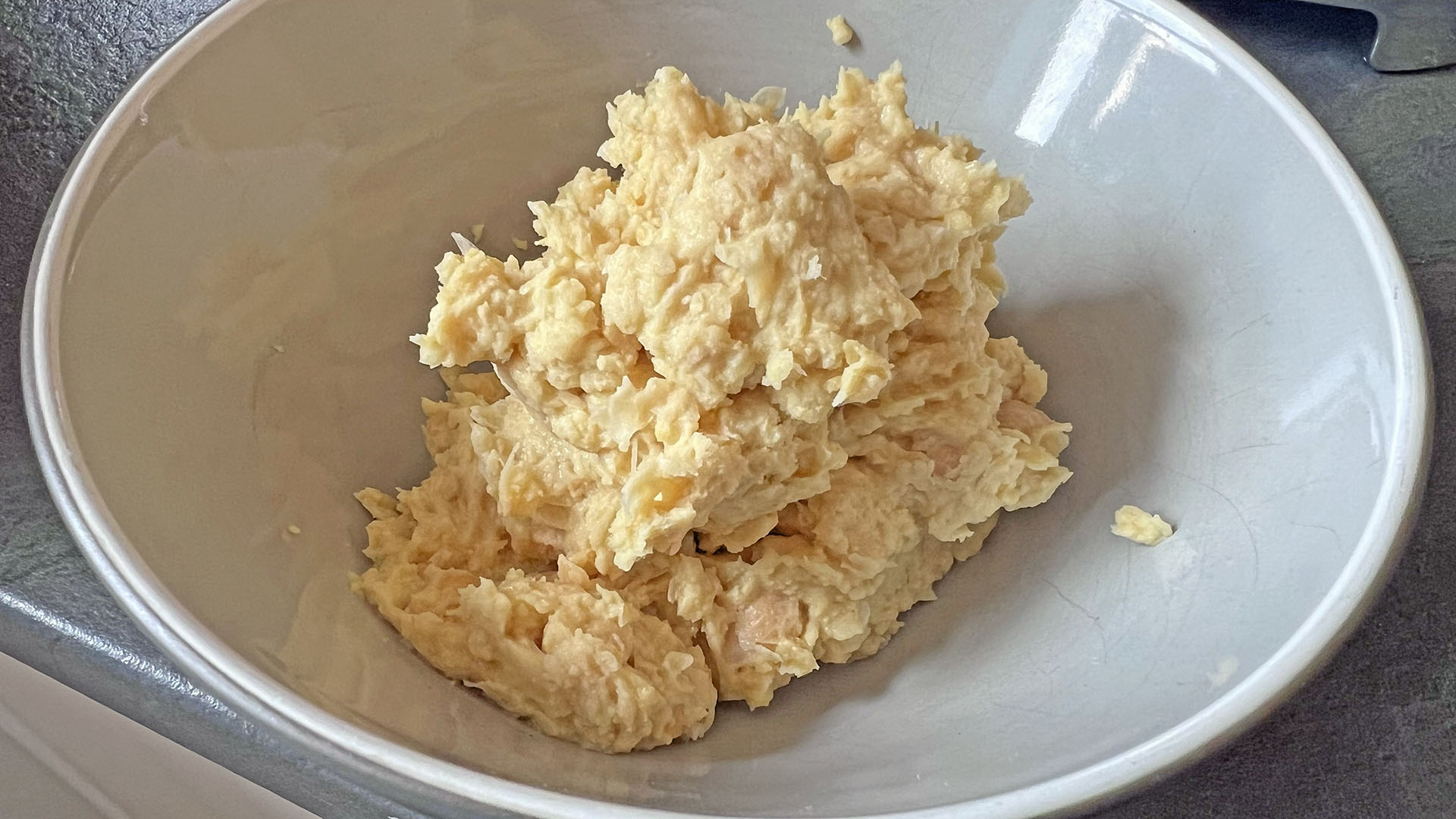
Specifications
Reasons to buy
Reasons to avoid
✅ You have limited kitchen space: This is surprisingly compact for a premium blender, and its square base fits neatly into corners.
✅ You don't use a blender very often: The Professional Blender is also lightweight, making it easy to move around and store.
❌ You are sensitive to noise: The Smeg Professional is one of the loudest blenders we've tested, reaching up to 95dB.
❌ You want value for money: This blender looks stunning, but you can get similar features for less cash from other brands.
The Smeg Professional Blender delivered the best crushed ice of any blender we've tested, turning cubes into even and smooth snow that's perfect for margaritas or slushies. The design is slimline and ultra-stylish, with a more grown-up, minimalist look you might expect from this brand. There's a good range of blending options – nine speeds, four presets (including ice), plus pulse, and even an Auto Clean option. On test, we found these presets very effective, although we were less impressed with the results in manual mode; these could be hit-and-miss.
It sits in the premium price bracket, and although the performance is solid, it's really aimed at style-conscious buyers. If you want a more heavy-duty blender, you'd be better off with with the Breville the Super Q (#6) or, if you're getting really serious, the Vitamix A3500 (#7).
Read our full Smeg Professional Blender review
The best professional blender
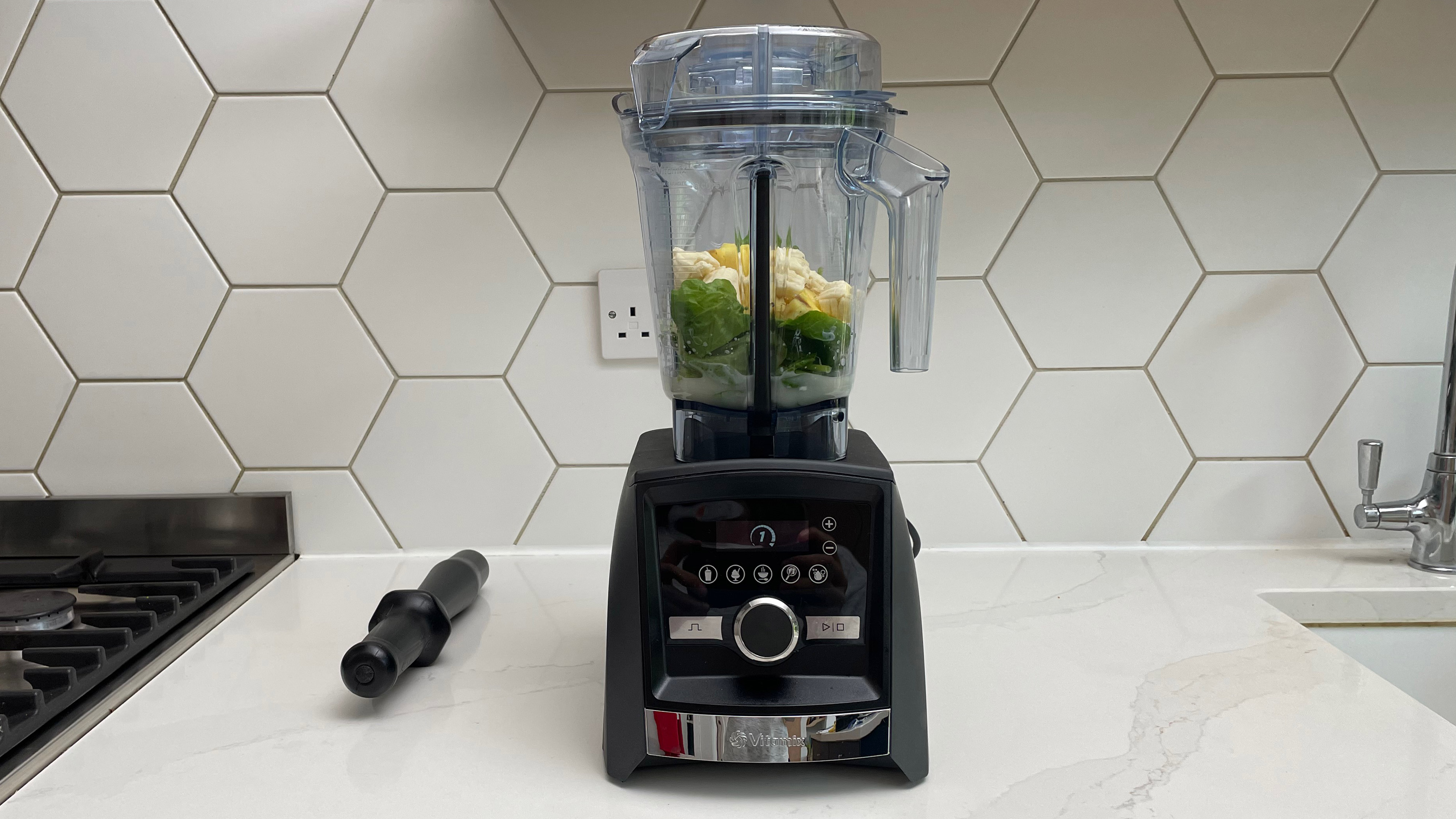
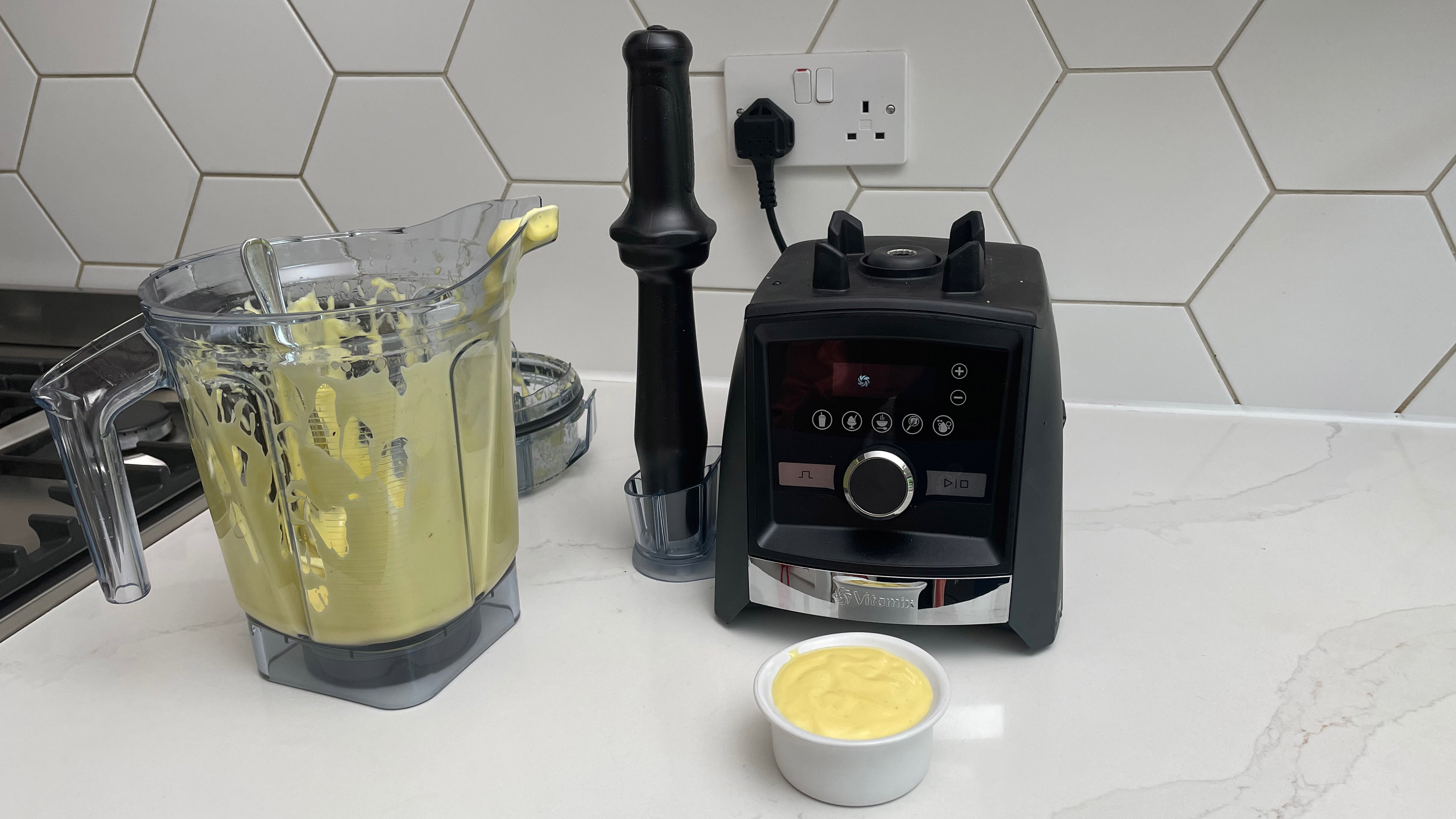
Specifications
Reasons to buy
Reasons to avoid
✅ You want to blend large quantities: This is another blender with a generous two-liter capacity pitcher.
✅ You want the power to tackle just about any food: The Vitamix A3500 / A3500i is a home blender with a professional-grade motor and blades.
❌ You want a full set of accessories: Extra accessories are sold separately unless you can get your hands on the Anniversary Edition.
❌ You need something lightweight: The powerful motor makes this blender seriously heavy, and you may struggle to get it in and out of a cupboard.
The Vitamix A3500 blender means serious business and made light work of combining ingredients in our tests without leaving any chunks behind. We used it to create deliciously smooth smoothies, as it can quickly blitz ice cubes too. This Vitamix blender has an impressive 10 variable speed settings, a pulse function, and five programs with predefined speeds and durations for everything from smoothies to dips and spreads. There's even a programmable timer to set the blender to work and automatically switch it off once the timer is up.
However, the A3500 is quite bulky, so consider this if you're short on space. It's heavy and the most expensive blender we've tested, with a price tag that's double and, in some cases, triple that of other blenders on this list.
Read our full Vitamix A3500 review
The best food processor combo
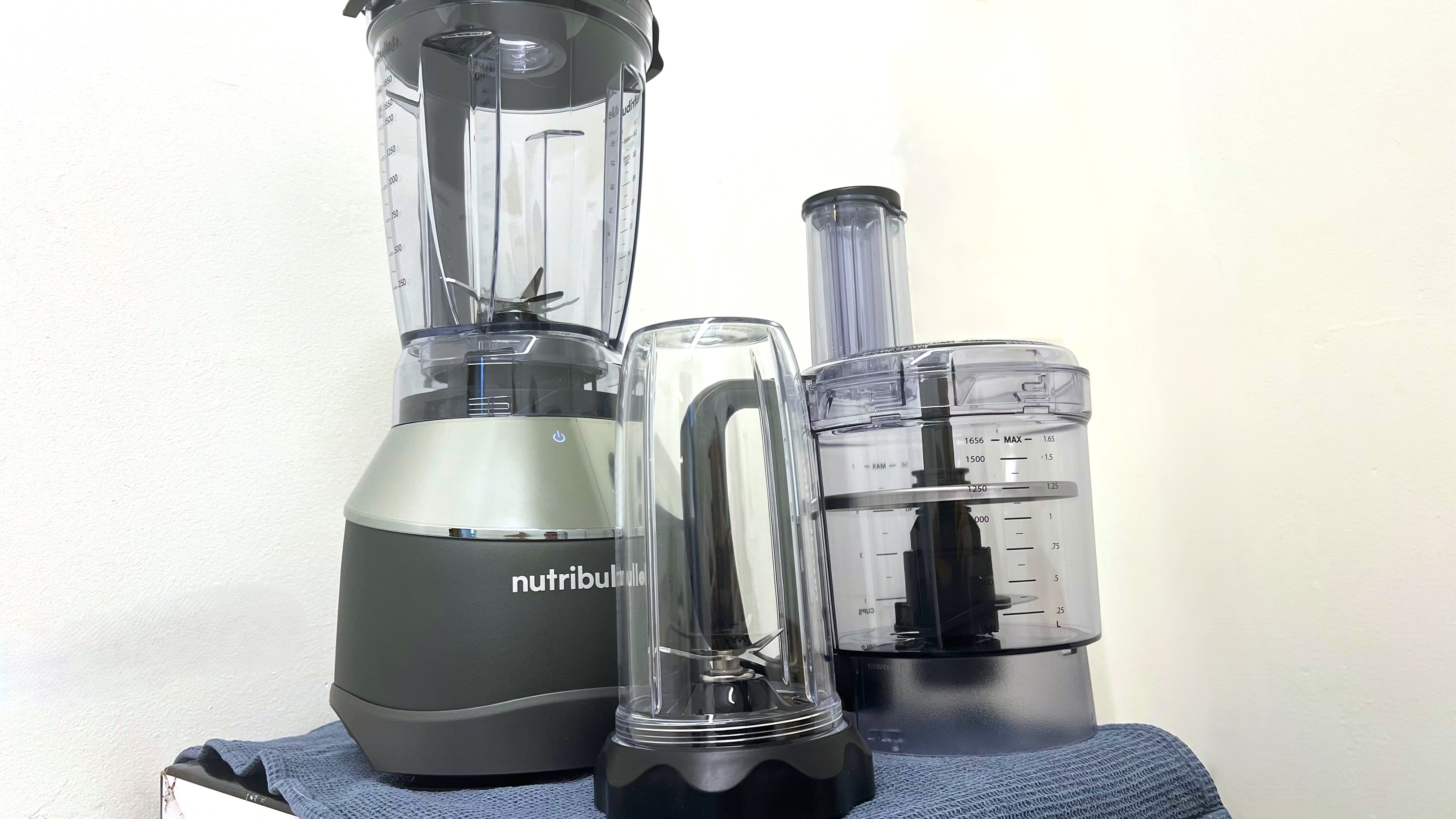
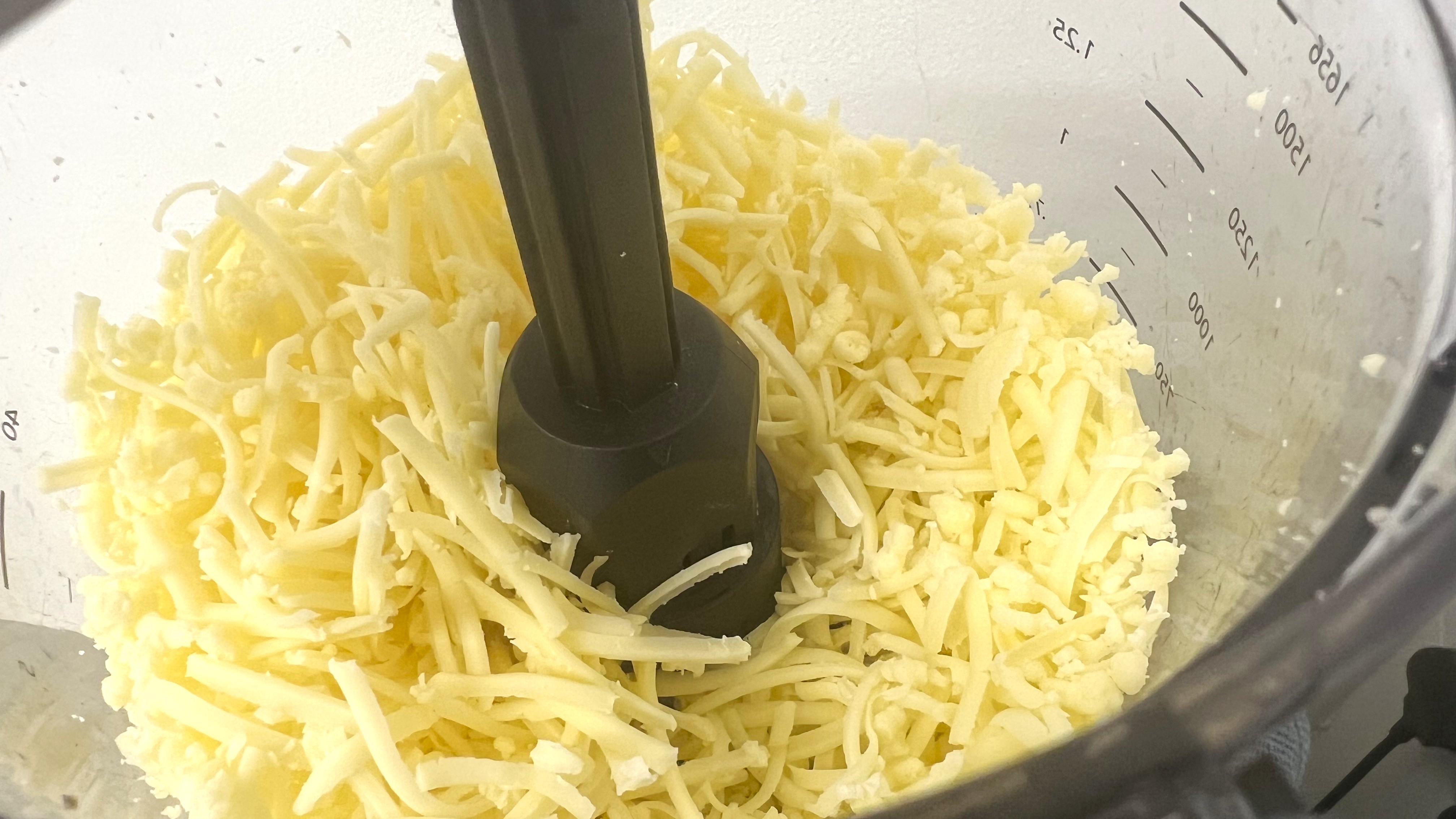
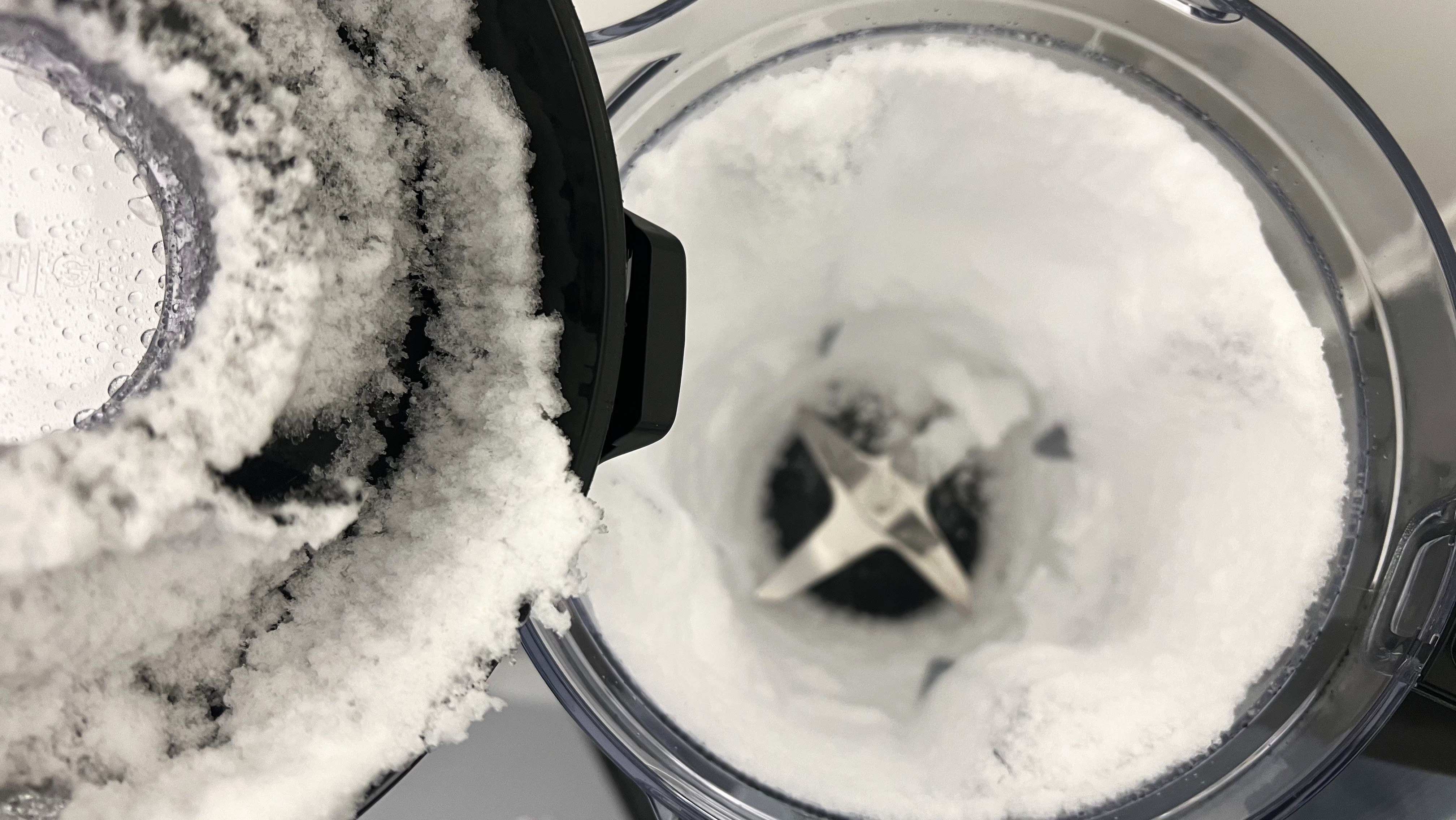
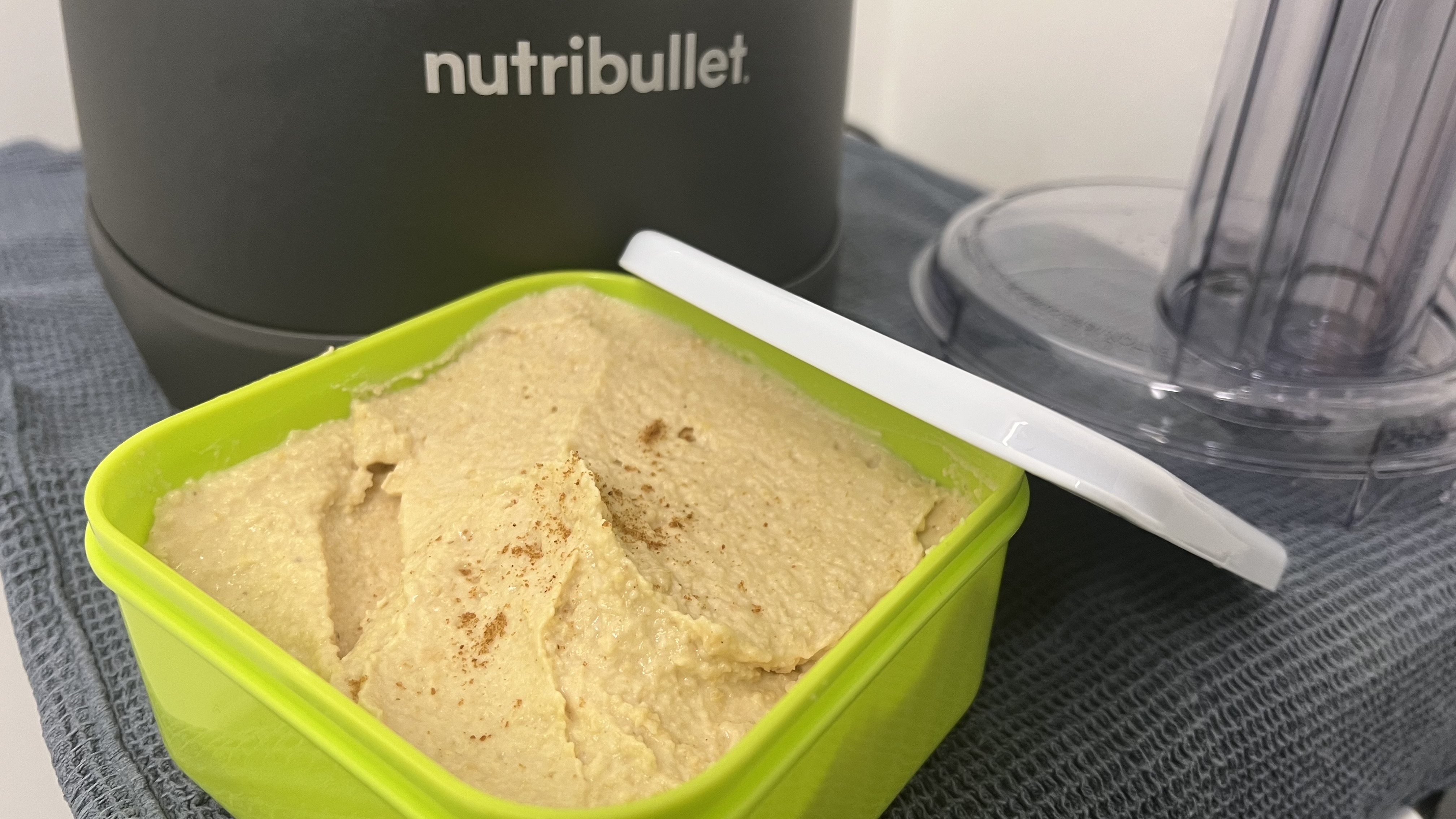
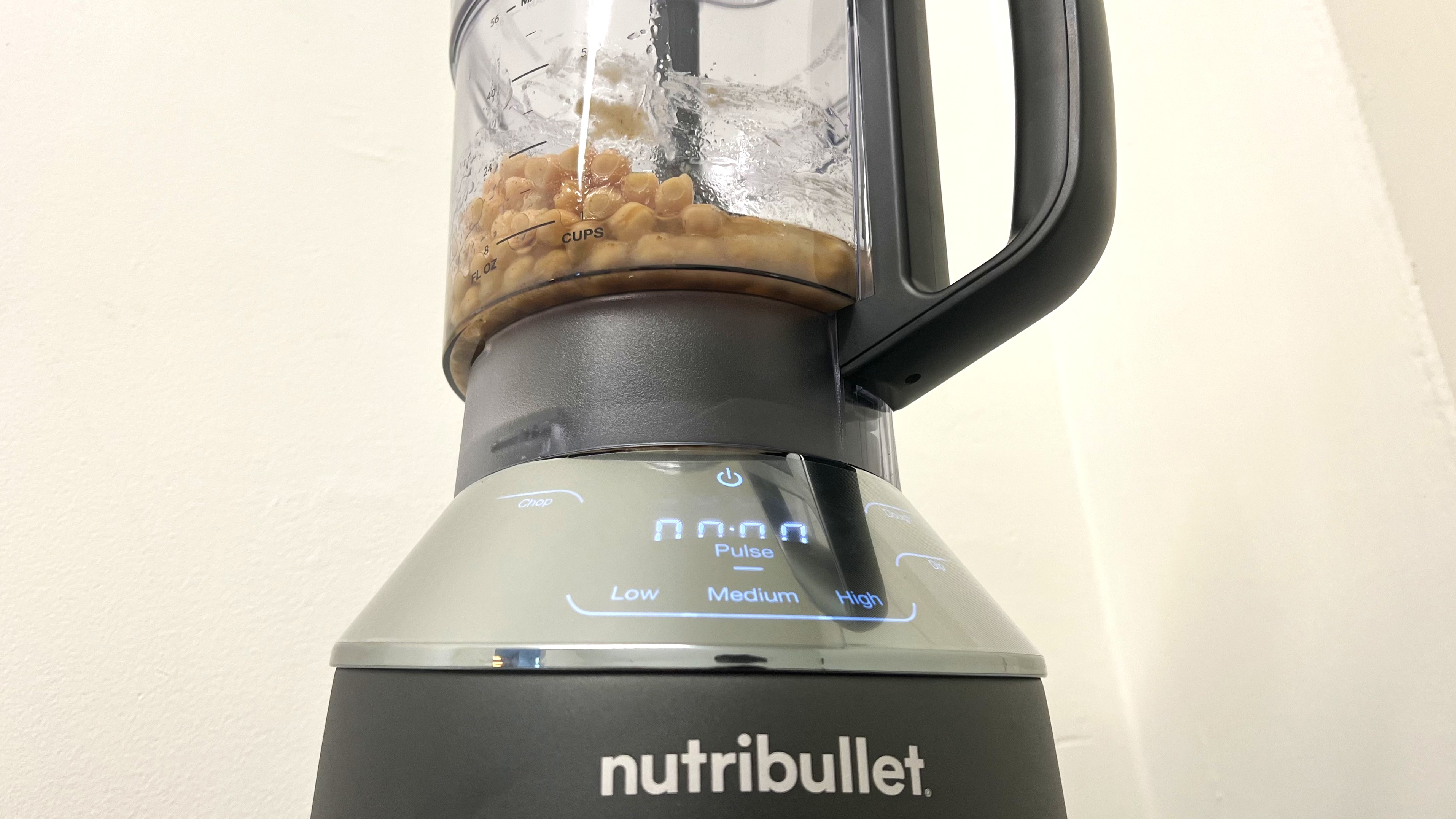
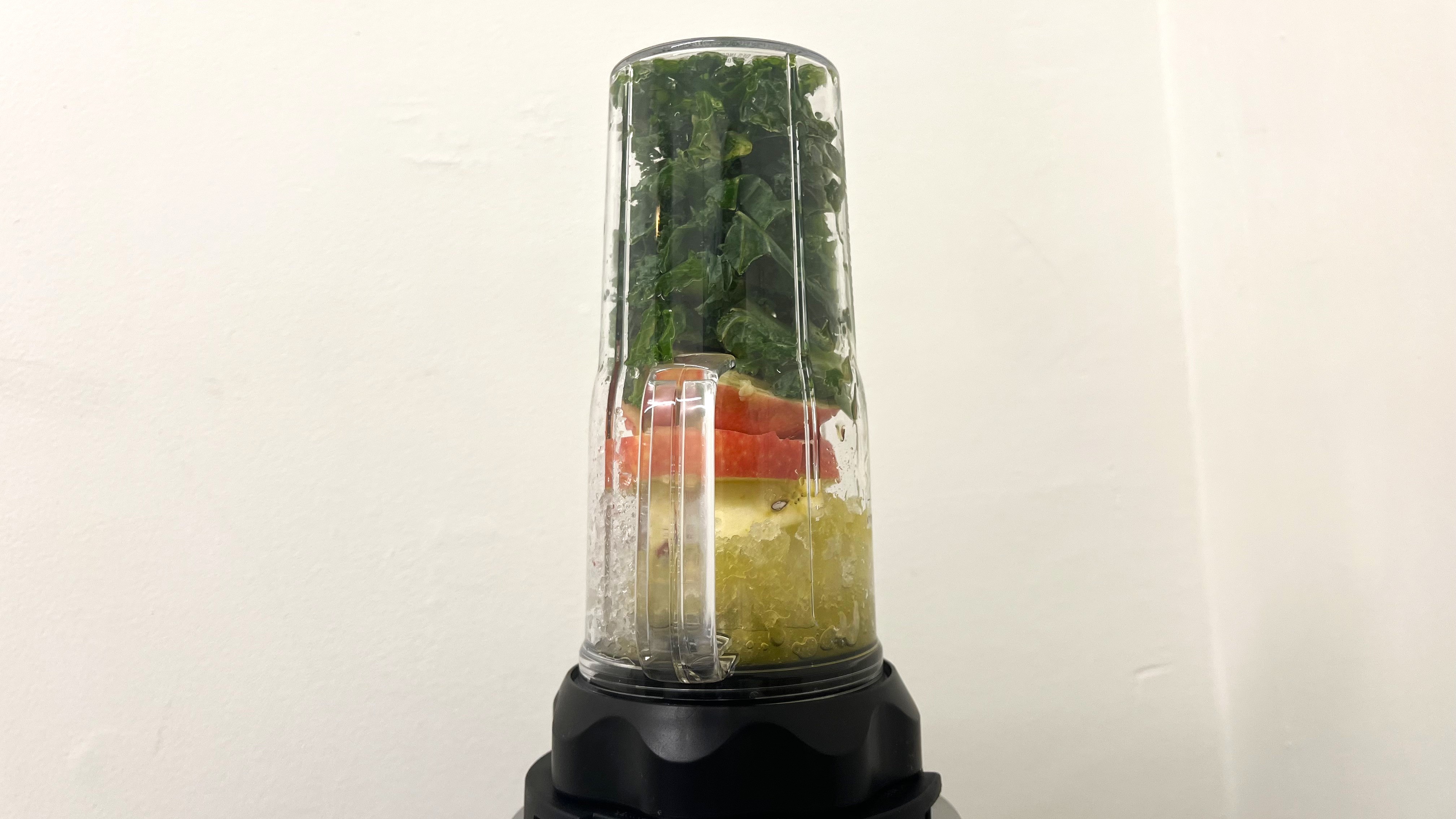
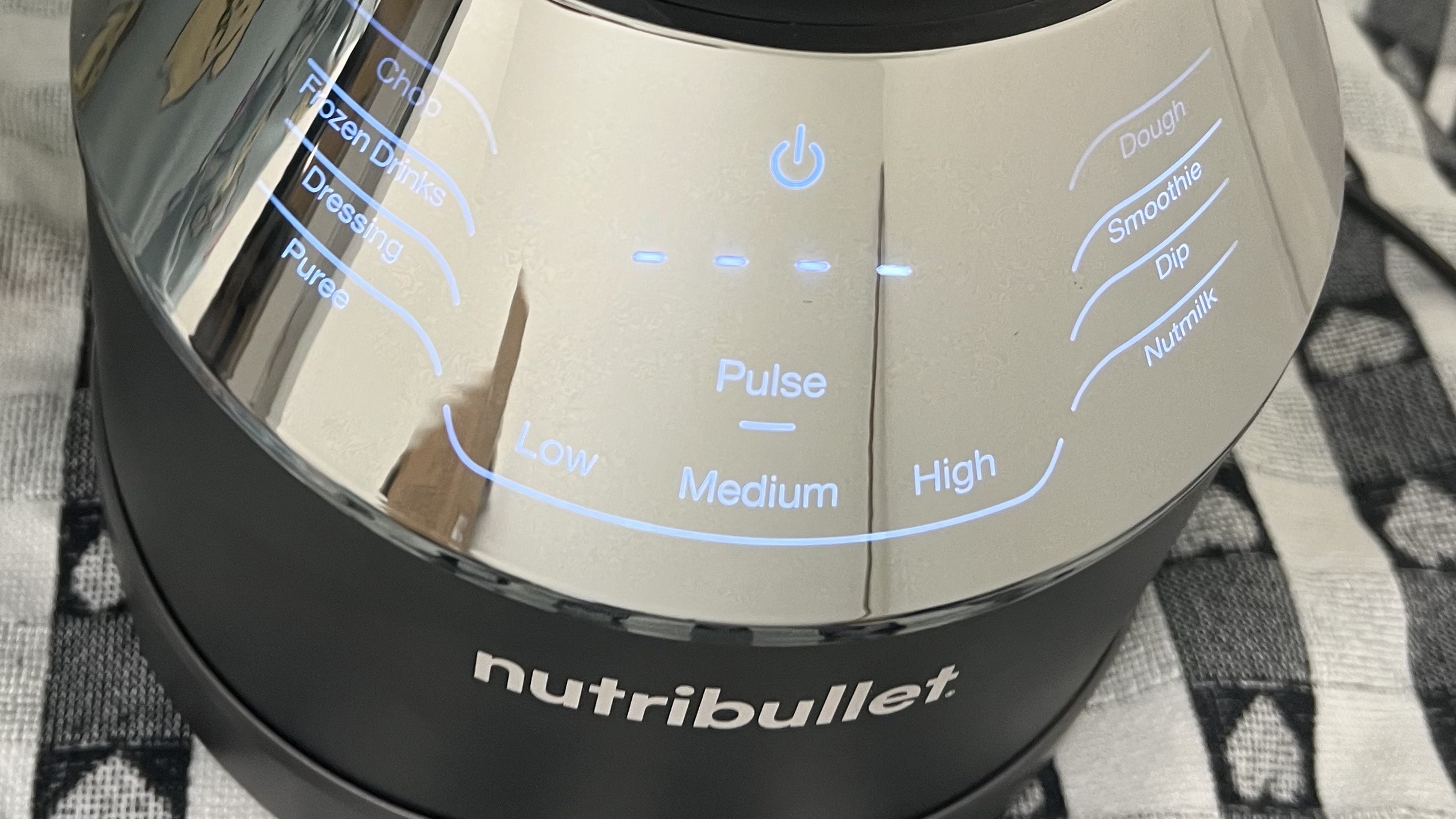
Specifications
Reasons to buy
Reasons to avoid
✅ You want a complete food prep system: If you're in the market for a personal blender, jug blender, and food processor all in one, the Triple Prep System has you covered.
✅ You’d like a blender with dishwasher-safe parts: Once you’re done blitzing up something tasty, you can just pop your pitcher, processor, or cup into the dishwasher.
❌ You just need a blender for drink prep: If you’re not much of a home chef and solely see yourself using your blender for mixing up smoothies and shakes, the Triple Prep System is overkill.
❌ You need something lightweight: The powerful motor makes this blender seriously heavy, and you may struggle to get it in and out of a cupboard.
If you're buying appliances for your very first kitchen, or you're just short of space, the Nutribullet Triple Prep System is a great option. It consists of a base containing a 1,500W motor, with a full-size blending jug, single-portion smoothie maker, and food processor so you get three appliances in one.
Nutribullet hasn't skimped on quality here, and during our testing all three components performed as well as a standalone appliance. The jug blender was excellent for hummus and mayonnaise (though we found it best for large servings), the blending cup made light work of even tough smoothie ingredients, and the food processor was ideal for veggies and cheese.
You don't get all the discs and blades you would with a top-end food processor (there's no dough mixer, for example), but all the basics are covered well. (If you're a serious home chef, take a look at our full guide to the best food processors for some premium options.)
Read our full Nutribullet Triple Prep System review
We also tested
We test new kitchen appliances from big brands every month here on TechRadar. Here are some of the ones that didn't quite make our shortlist:
KitchenAid Go Cordless Personal Blender
We like the fact that this blender's battery can be removed and switched between appliances, and it handled soft ingredients well, but it struggled with frozen fruit, and although it's quite compact, it's not small enough to carry around like the Nutribullet Flip.
Read our full KitchenAid Go Cordless Personal Blender review
Nutribullet 600 Series Blender
This blender is powerful enough to handle frozen fruit and fibrous veggies, but during our tests we found it didn't have enough oomph to blend ice, and it was surprisingly tricky to clean after use.
Read our full Nutribullet 600 Series Blender review
Ninja Blast
This personal blender is surprisingly powerful for its size, and it was one of the first on the market to include a sip lid so you can drink from it directly without having to risk spills by decanting into a different vessel. Crushed ice turned out quite chunky though, and some ingredients had a tendency to get stuck.
Read our full Ninja Blast review
Amzchef ZM5003 Smoothie Countertop Blender
This blender seemed promising, with a large capacity and powerful motor, but it didn't live up to expectations. It proved very loud during our tests, and its blades weren't up to the task of handling tough ingredients. It was disappointingly tricky to clean as well.
Read our full Amzchef ZM5003 Smoothie Countertop Blender review
How to choose the best blender for you
When selecting the best blender for you, start by identifying the type of blender you need. Jug blenders have a blade inside the plastic or glass receptacle, which spins when connected to the motor in the base units. As a result, they can blend in large quantities but the downside is that they are also usually bulky.
Smoothie blenders, also known as personal blenders, come with a small plastic cup rather than a jug. Fill the cup with your ingredients, then attach the blade, flip the cup upside down and connect to the base. When the ingredients are blended to your liking, remove from the base, unscrew the blade, and screw on a to-go lid, then take your drink with you.
Finally, there are also immersion blenders to consider. These are really useful for soup, where you can blend your soup in the pot instead of having to pour it into a separate blending appliance. Often referred to as hand blenders or stick blenders, immersion blenders are designed to be inserted into a saucepan or container of ingredients you want to puree. These compact appliances should be swirled around in the liquid while the blade spins to ensure it’s blended uniformly – but you need to be careful if you don't want soup shooting everywhere. For more advice on this, it would be worth taking a look at our jug blenders vs immersion blenders guide.
Things to look for in a blender
- Auto shut-off for safety
- BPA-free or glass jug
- Measurements on the jug
- Drip-free pouring spout
- Capacity of jug (counter top) / tumbler (portable)
- No. of speed and power settings
- Non-slip feet
- Available accessories
What can you use a blender for?
Blenders can be used to blend, smooth or pulse a variety of foods (and liquids) depending on the type of blender you need. For example, if you just want to make simple smoothies and soups then a straightforward blender with not too many features and functions will be suffice. If, however, you want to smooth-out hot soups or pulse small, hard ingredients such as nuts then you will need to look out for the blender spec (and our reviews) which talks about this capability.
Blenders can also be used for making a healthy drink on-the-go. Portable and one-cup blenders cater for this. You'll often find that they are also much easier to clean than the larger countertop blenders, simply because there are fewer components to it.
If you're short of countertop space then a blender can sometimes even be used as a food processor. When we investigated whether or not can a blender be used as a food processor we found that hybrid blenders that come with a food processor attachment can do many of the jobs food processors can do, and while we wouldn't recommend them for serious processing they're great for smaller jobs.
Which blender is best for smoothies?
If you’re looking for the best blender to make smoothies in, we’d recommend opting for a dedicated smoothie maker rather than a jug or immersion blender. As mentioned above, these feature a cup that the blade assembly screws onto before being attached to the base. Once blending is complete, the blade assembly can be switched for a to-go lid that includes a spout, letting you sip the drink without having to decant it first. Our pick is the Ninja Personal Blender and Smoothie Maker QB3001, as it strikes the right balance between price and the ability to blitz fresh produce into a smooth, grit-free drink.
However, there’s no way to add liquid during blending, so you can’t use it to emulsify ingredients, such as when making mayonnaise. In this case, we recommend the Breville the Super Q, as it comes with a pitcher so you can add liquid during blending. It’s also powerful enough to crush ice and pulverize nuts and come with a travel cup for smoothies - although you will need to decant the drink from the jug into the cup.
Blenders vs juicers
While juicers and blenders look similar, they perform slightly different tasks. Blenders use sharp blades to break down the contents of the blending jug. This means everything in the jug is turned into a smooth mixture. Juicers, however, extract liquid and leave behind the rest of the fruits or vegetables. As you might expect from the name, juicers are primarily used to make fresh juice, so they can be pretty limiting, whereas blenders give you the means to make everything from smoothies to dips.
For all the pros and cons of these appliances, head to our full feature on Blenders vs. juicers: what’s the difference?
How do I clean a blender?
Staying on top of cleaning your blender is vital if you want it to last as long as possible and if you want to avoid any nasty odors building up. You can place many blending jugs inside the dishwasher, but you can also clean them by adding warm water and dish soap to the blending jug, putting the lid on, and blending up the soapy solution.
If you’re struggling to get rid of any stubborn stains, create your cleaning paste using one tablespoon of baking soda and mix it with one teaspoon of white vinegar. You can add this solution to the stains using a clean scrubbing brush or a clean toothbrush.
For more handy hacks, read our how to clean a blender feature.
What's the best blender for protein shakes?
The best blender for protein shakes is the Beast Mighty 850 Plus, which is specifically designed for making shakes and smoothies, and is powerful enough to tackle even tough ingredients.
The Beast Mighty 850 Plus has a most powerful motor than many personal blenders, which mean it can blend ice and frozen ingredients more easily, and its blending vessels have ridged sides that help produce more turbulence within the blending cup so ingredients don't get stuck around the edges or miss the blades.
This blender comes with two different-sized cups, so you can pick the one that suits your thirst, and once you've made your drink you can seal it up with the carry lid (which has a soft handle), or screw on the drinking lid, which has a hole in the top for a drinking straw and lets you sip safely without spills.
The Beast 850 Plus isn't rechargeable, so you'll need to make your protein shake at home before heading out to the gym. If you want a blender that you can use on the move, take a look at the Ninja Blast Max instead, which is the most powerful cordless blender I've tested, has a non-leak drinking lid, and comes with a convenient carrying handle.
What's the best blender for nuts?
The best blender for nuts is the Breville Fresh & Furious (which is called the Sage Fresh & Furious in the UK). This blender has a medium-sized jug with a relatively narrow bottom, which makes it easy to chop small portions of nuts, or blend them into nut butter, without them getting stuck to the sides or missing the blades.
It's also one of the most affordable jug blenders we've tested, and is less than half the price of a similarly-sized Vitamix blender.
If you don't want a full jug blender, take a look at the Bosch ErgoMaster Series 6, which has a mini chopper attachment that's ideal for processing a handful of nuts. It's not powerful enough to make nut butter, but if you just need some chopped nuts to top a salad (for example), it's ideal.
What's the best blender for cooking?
The best blender for cooking is the Braun TriForce, also known as the PowerBlend 9. It performed consistently well in all our tests, from blending ice to making smooth mayonnaise and hummus, and was a reliable companion in the kitchen.
Many blenders just give you a choice of different speeds, but the TriForce also offers an array of presets to use when you're cooking with particular ingredients. There's even a dedicated soup mode that will chop your cooked ingredients, blend them together, and then heat them for about five minutes to make a tasty and comforting meal.
Each of the Braun TriForce's modes gives you three texture options, and during our tests these all worked very well. We were particularly impressed by the consistent texture of our home-made hummus.
We also liked the Braun TriForce's triangular pitcher, which helps prevent your ingredients becoming stuck on the inside when you're cooking.
If you're looking for a blender that can also do double-duty as a food processor, take a look at the Nutribullet Triple Prep System, which also serves as a smoothie-maker and food processor thanks to its extensive array of attachments.
When you're choosing a blender for cooking, always make sure that it has a vented lid. This prevents steam and pressure building up inside the pitcher when you're blending hot ingredients, which could cause dangerous splashing when you take the lid off.
What's the best quiet blender?
The quietest blender I've tested is the Nutribullet Flip, which reached a maximum of 79dB during my tests. According to the Center for Hearing and Communication, that's roughly as loud as a doorbell or pop-up toaster, and right down at the lower end of the scale for a blender.
The exact volume of your blender will depend on what you're blending. Hard ingredients are more effort to chop, making the motor strain, and will tend to shoot around the inside of the blending vessel. Mayonnaise and shakes, on the other hand, use wet ingredients that blend easily, making less noise.
How we test blenders
To compare each blender, we’ve spent hours in the kitchen preparing bowlfuls of mayonnaise, and blending pineapple, spinach, and Greek yogurt into a smoothie. As well as assessing how smooth the sauce and smoothie are, we’re also looking for ingredients that are well-combined without any curdling and whether there is residue trapped under the blade or if the elements have leaked from the base lid during blending.
We also evaluate how finely and evenly the blenders chop ice and nuts and compare how easy they are to use. Finally, for each model, we rate how loud they are, how durable and easy to clean the body and parts are, and the valuable accessories they come with, such as a tamper for moving ingredients closer to the blade, extra jugs, or containers, and recipe booklets for inspiration.
- You've reached the end of the page. Jump back up to the top ^
Sign up for breaking news, reviews, opinion, top tech deals, and more.

Cat is TechRadar's Homes Editor specializing in kitchen appliances and smart home technology. She's been a tech journalist for 15 years, having worked on print magazines including PC Plus and PC Format, and is a Speciality Coffee Association (SCA) certified barista. Whether you want to invest in some smart lights or pick up a new espresso machine, she's the right person to help.
- Helen McCueFreelance contributor
- Ruth HamiltonHomes Editor
